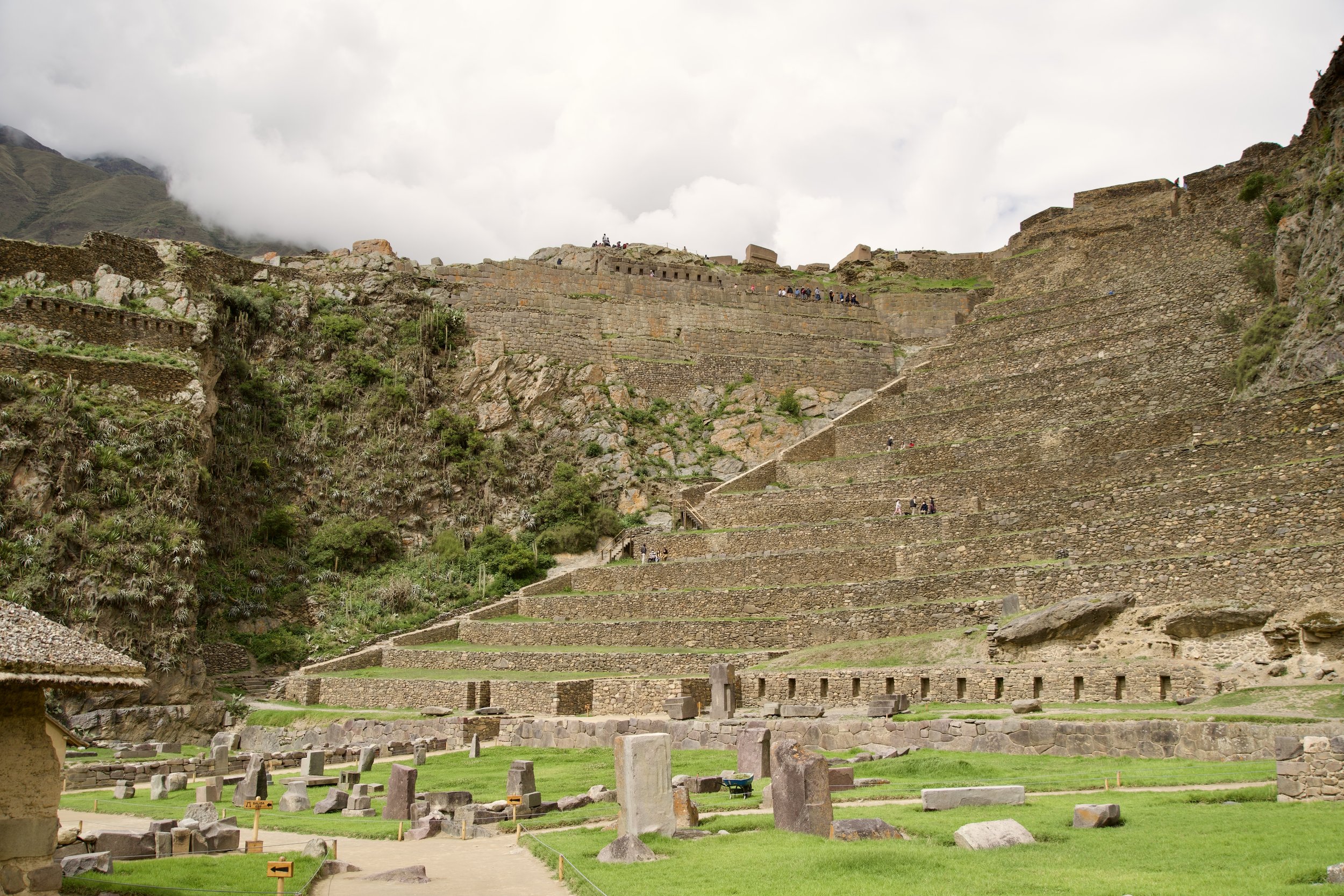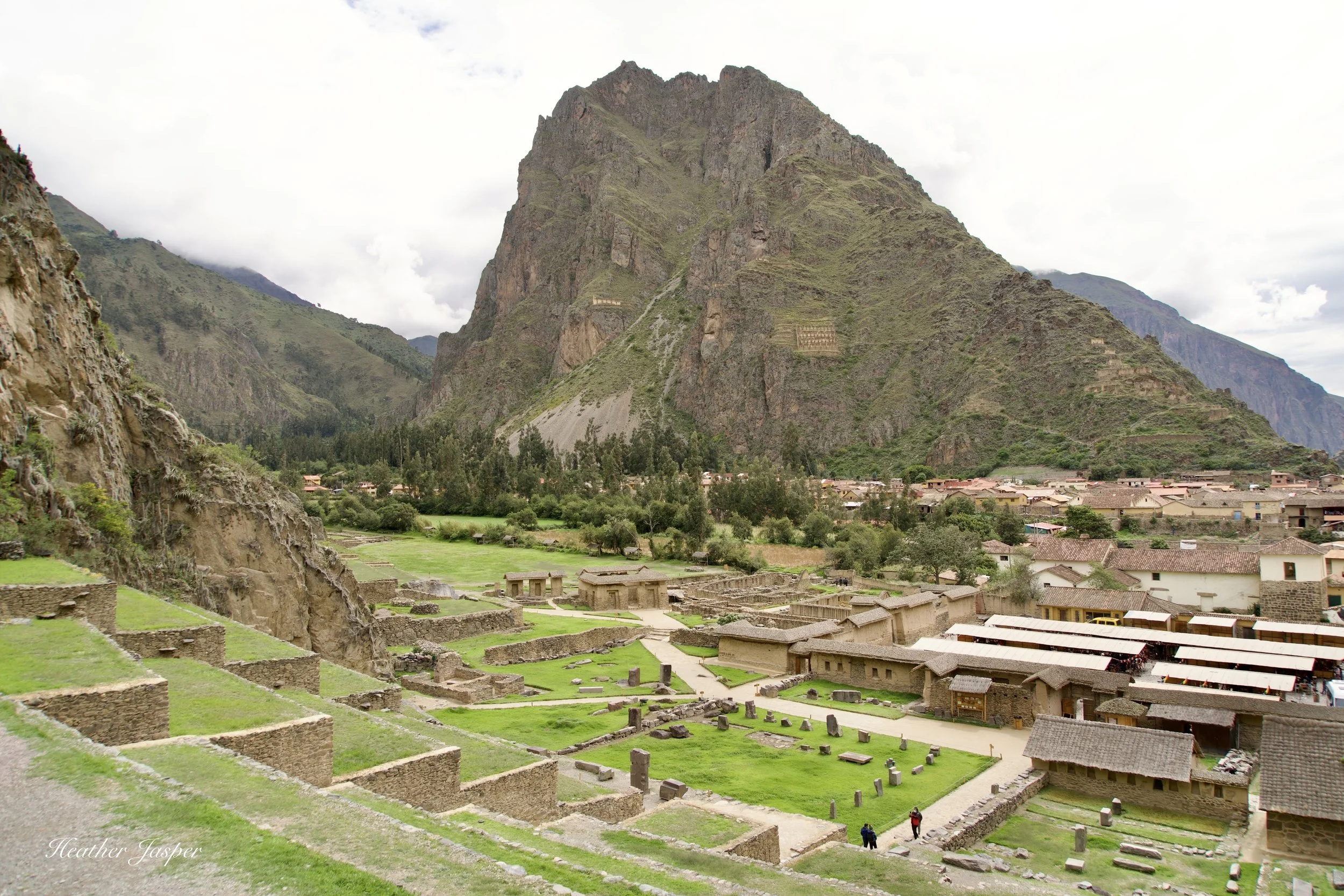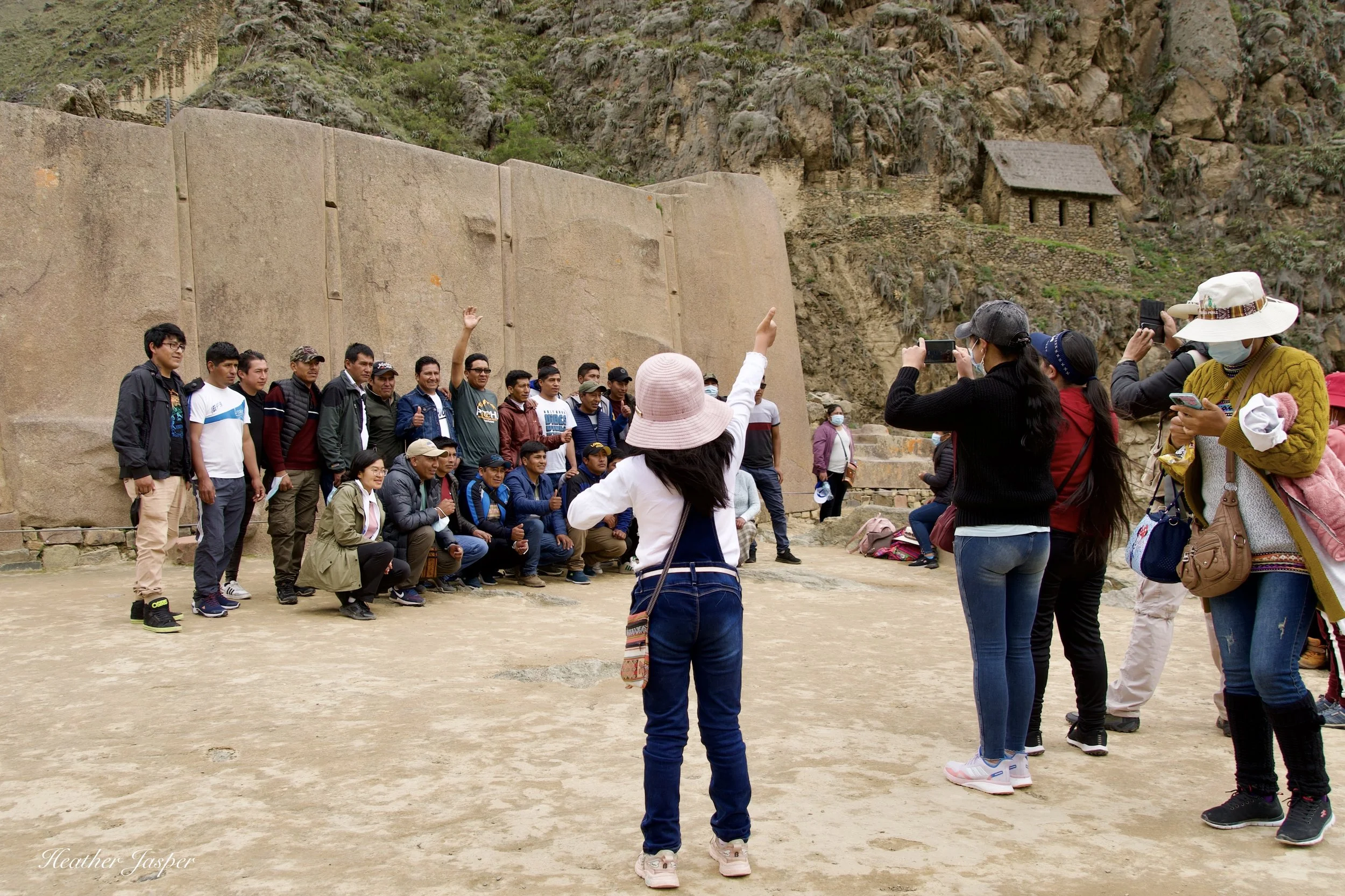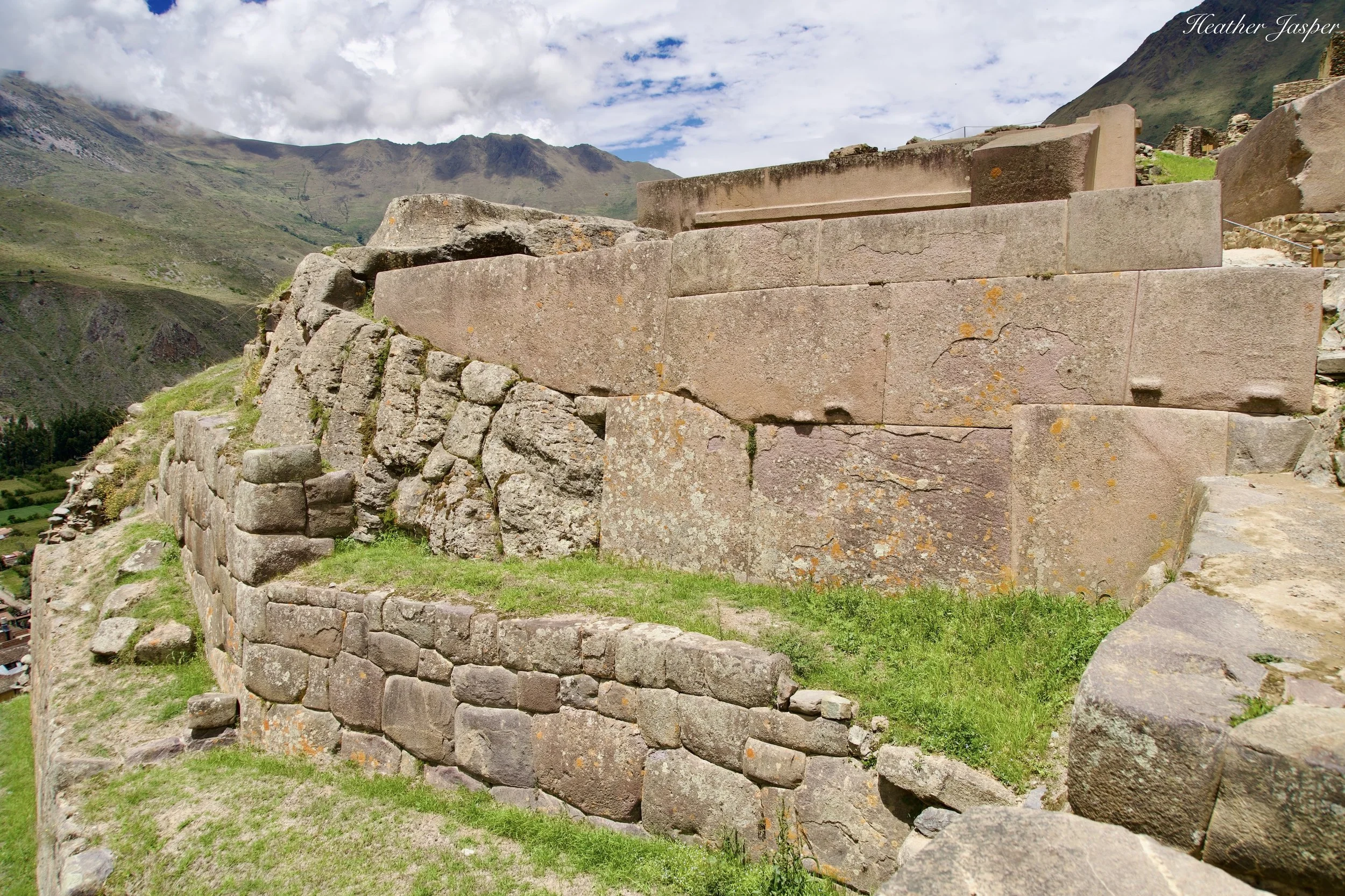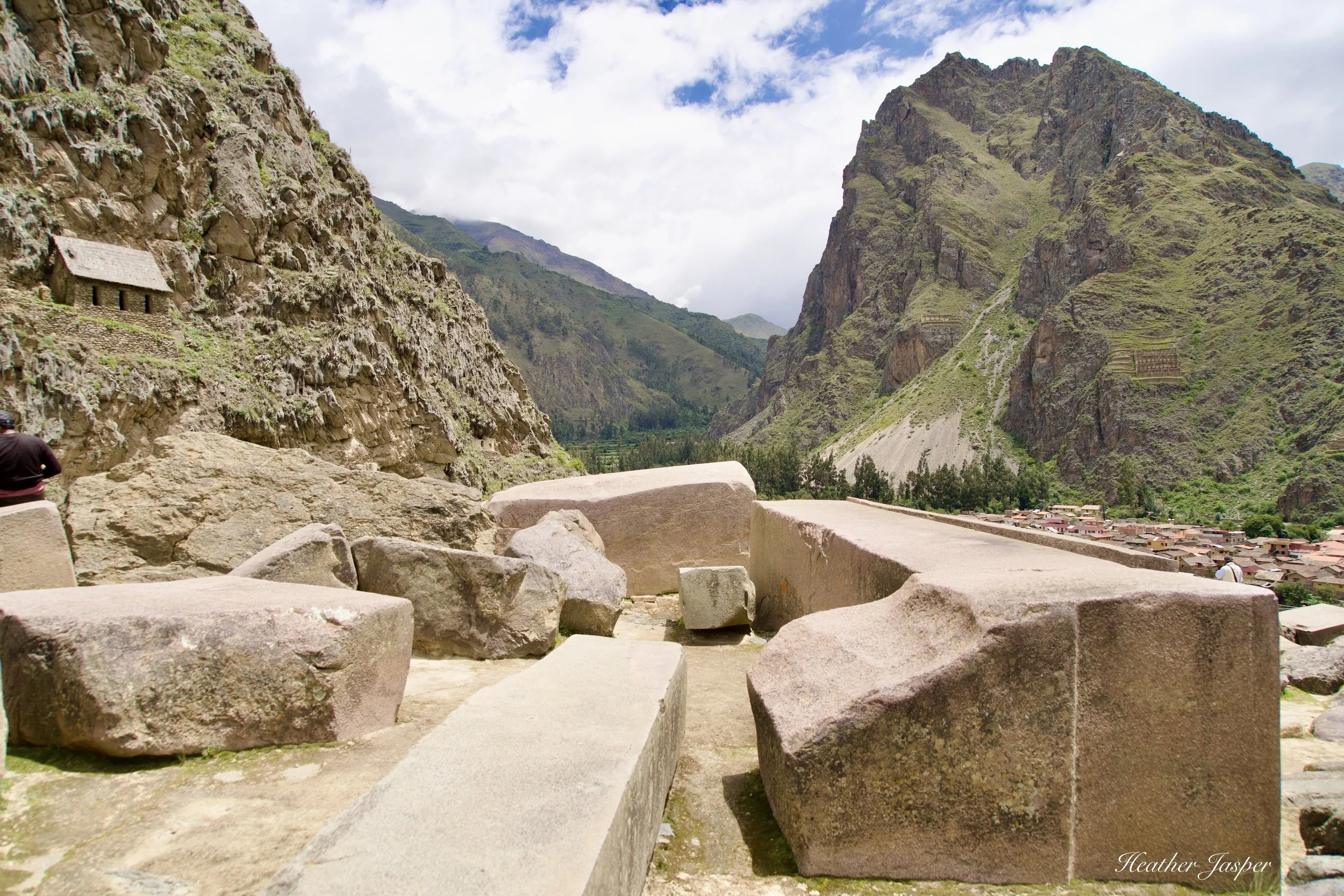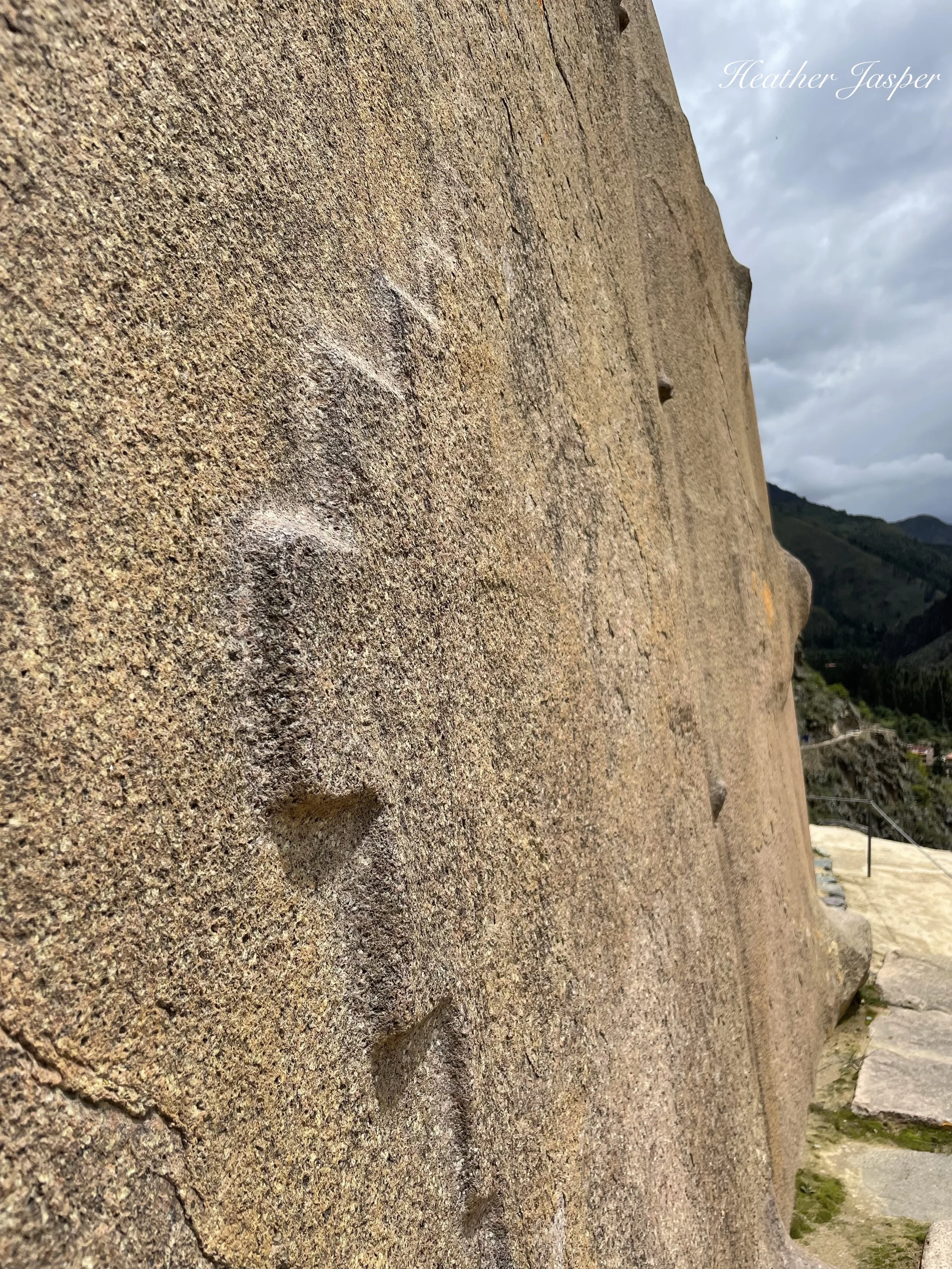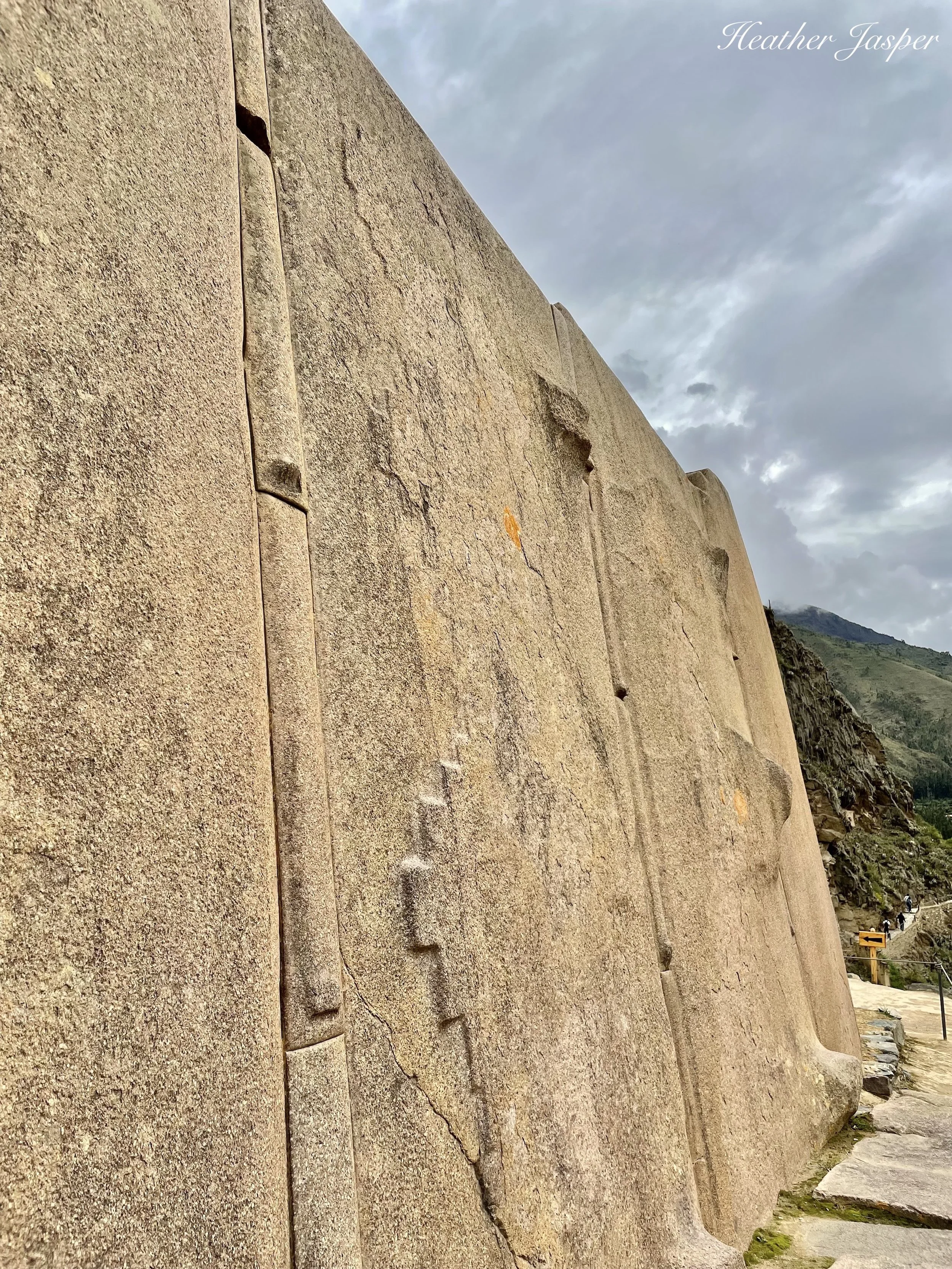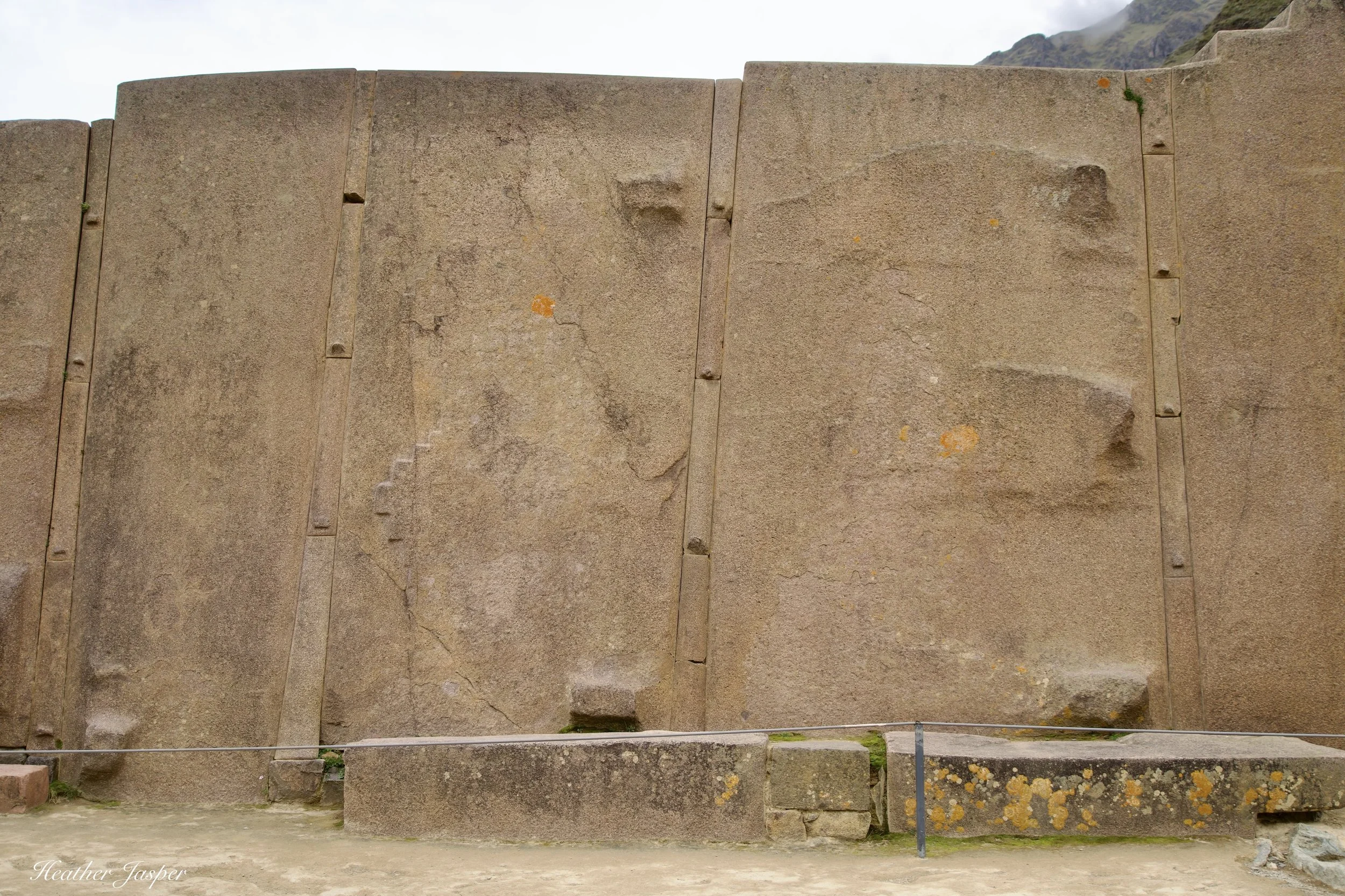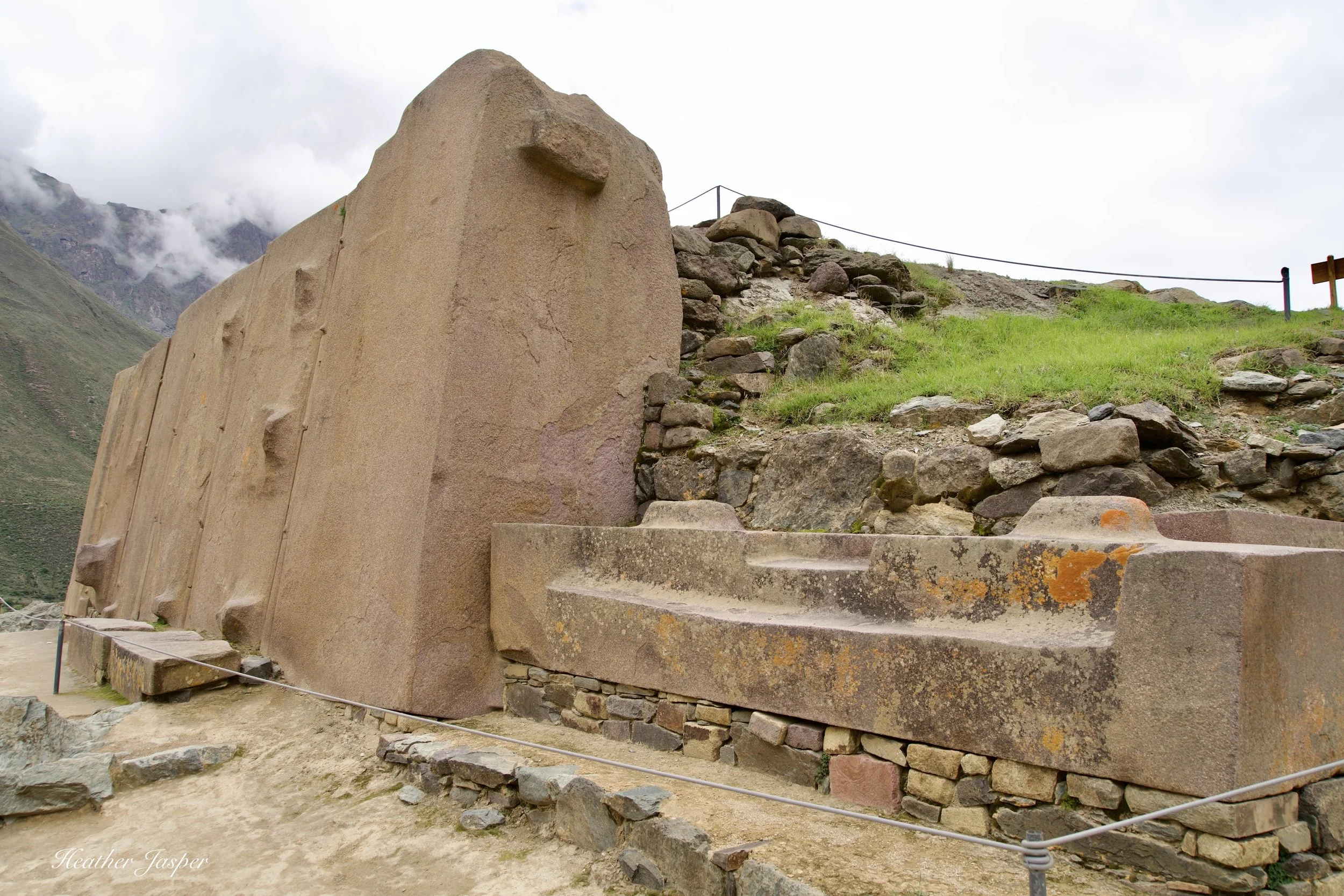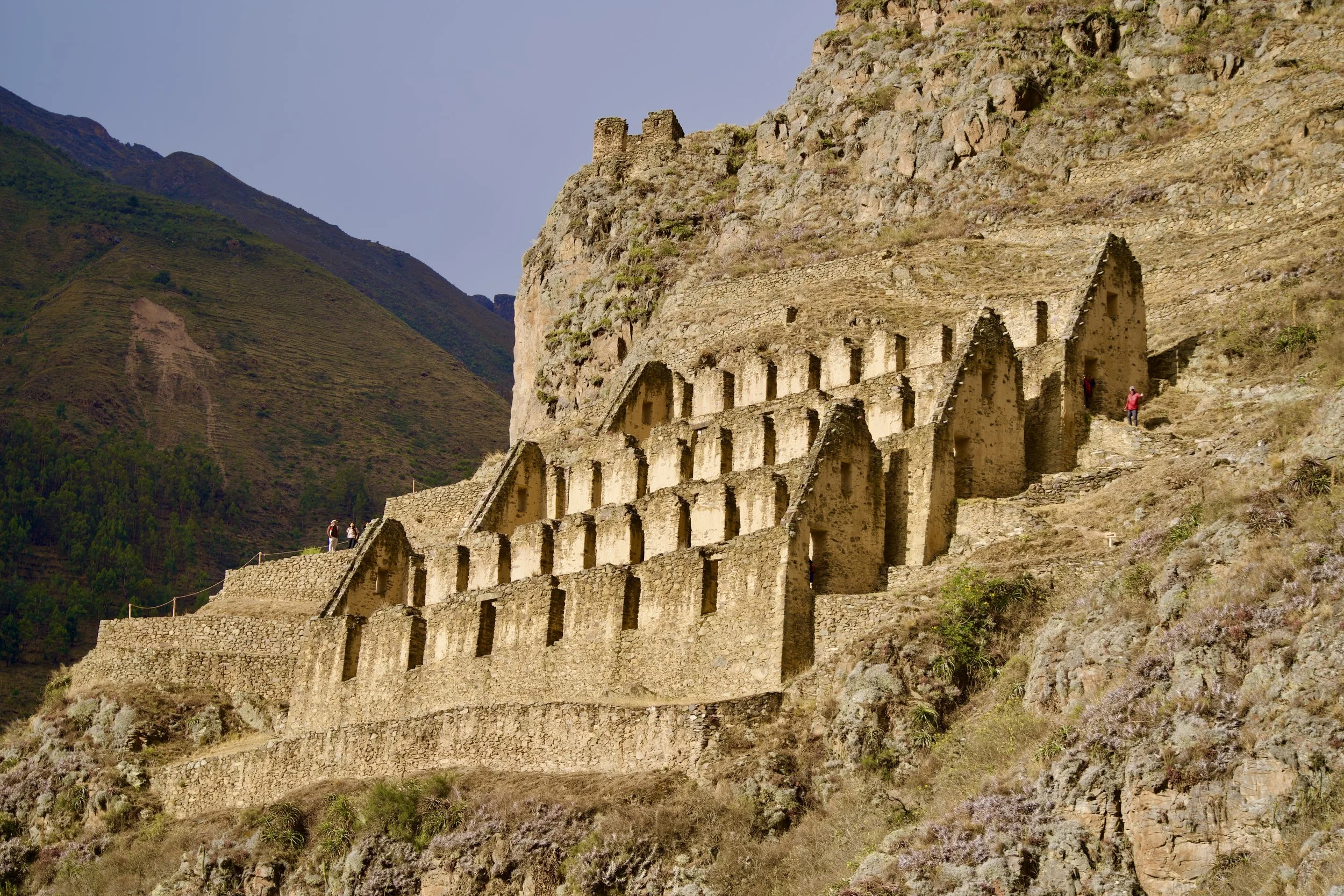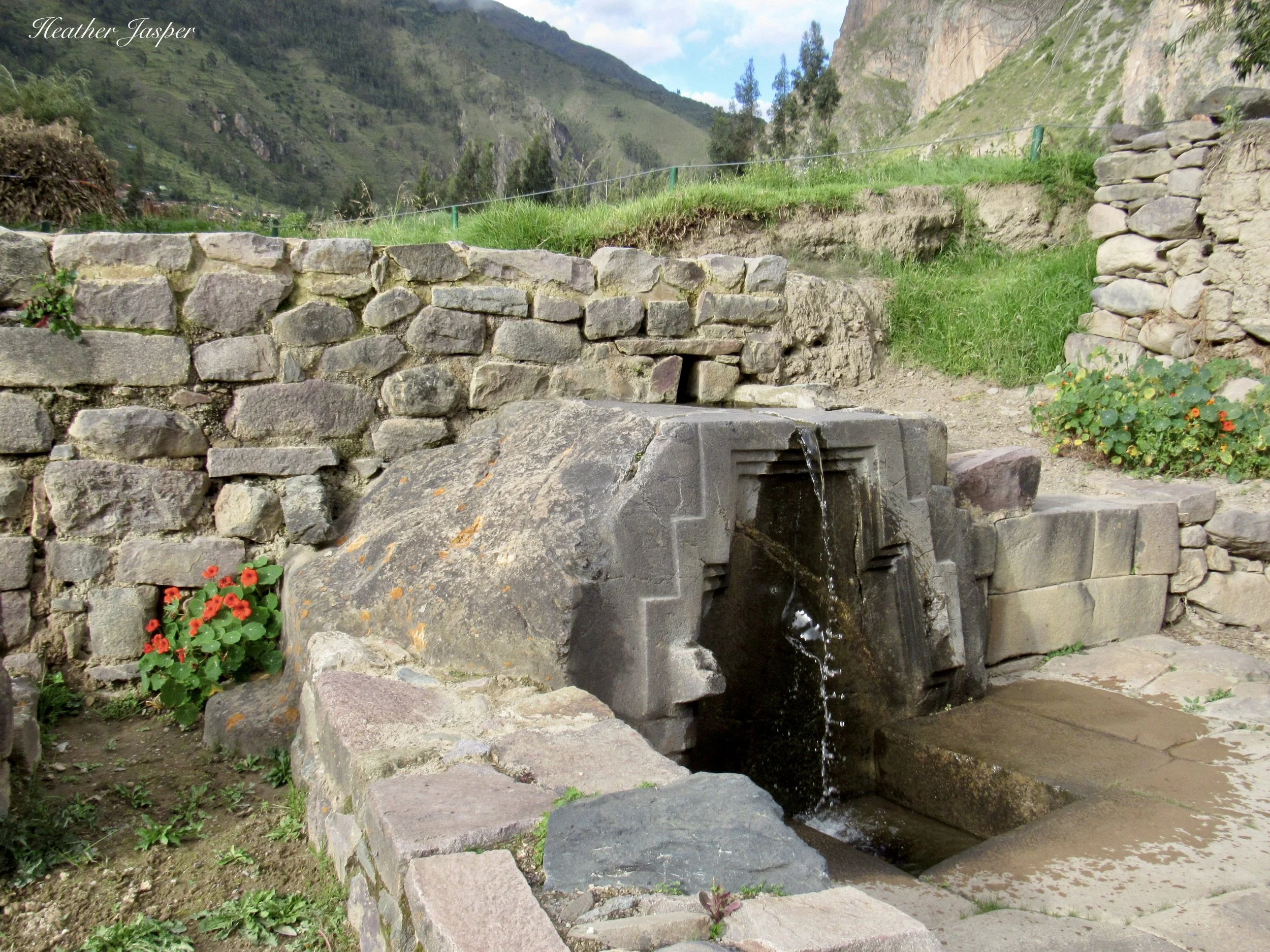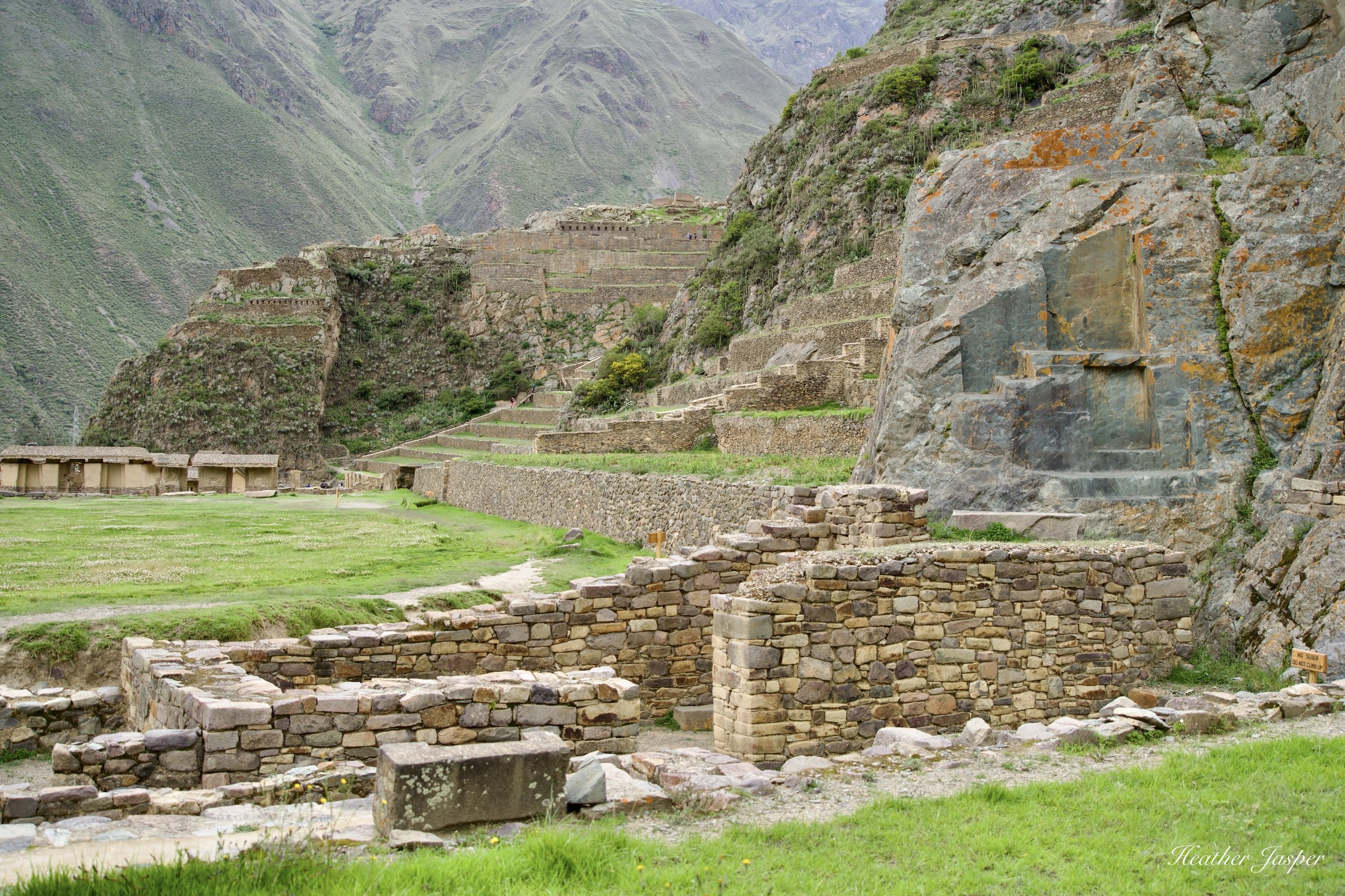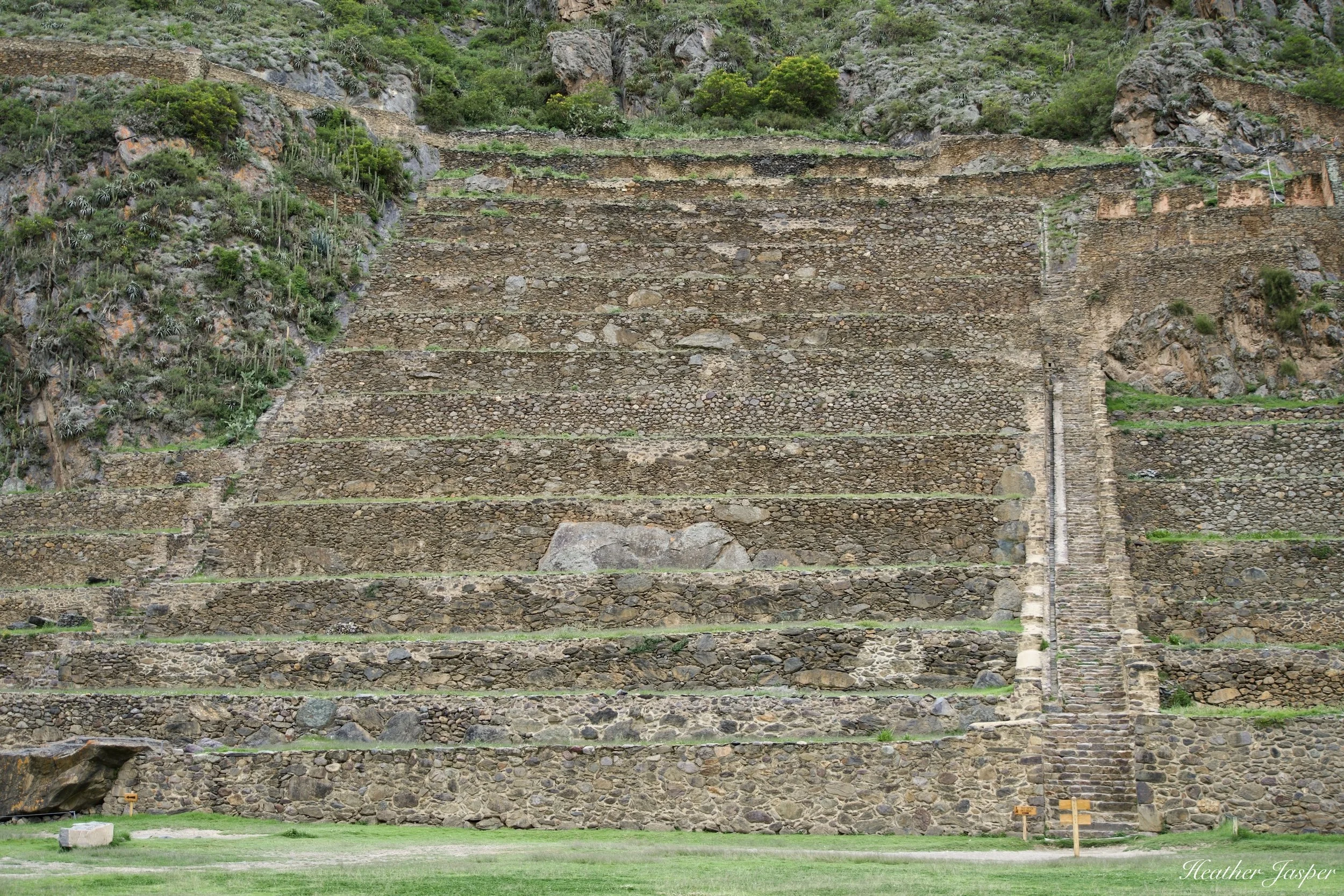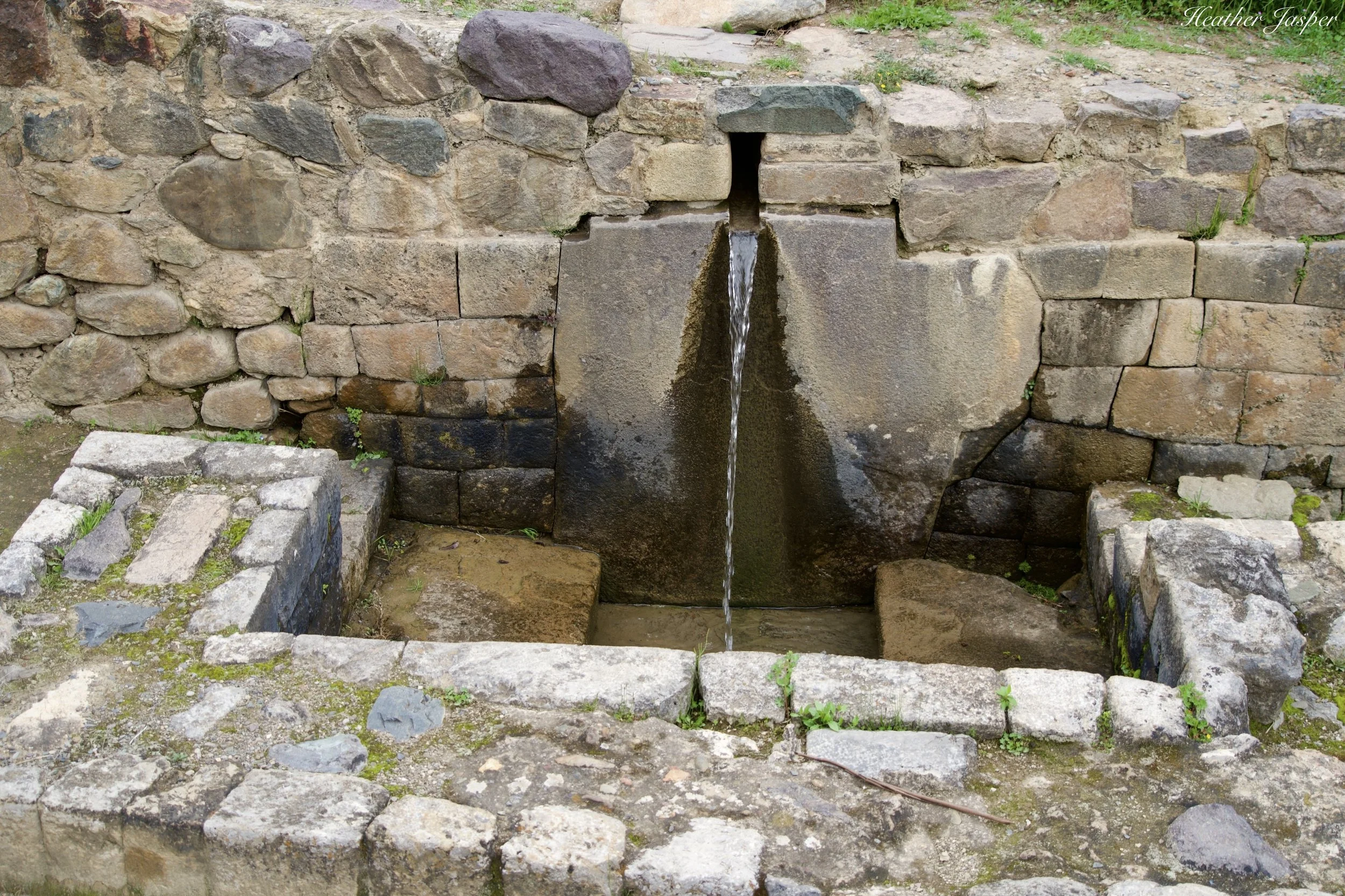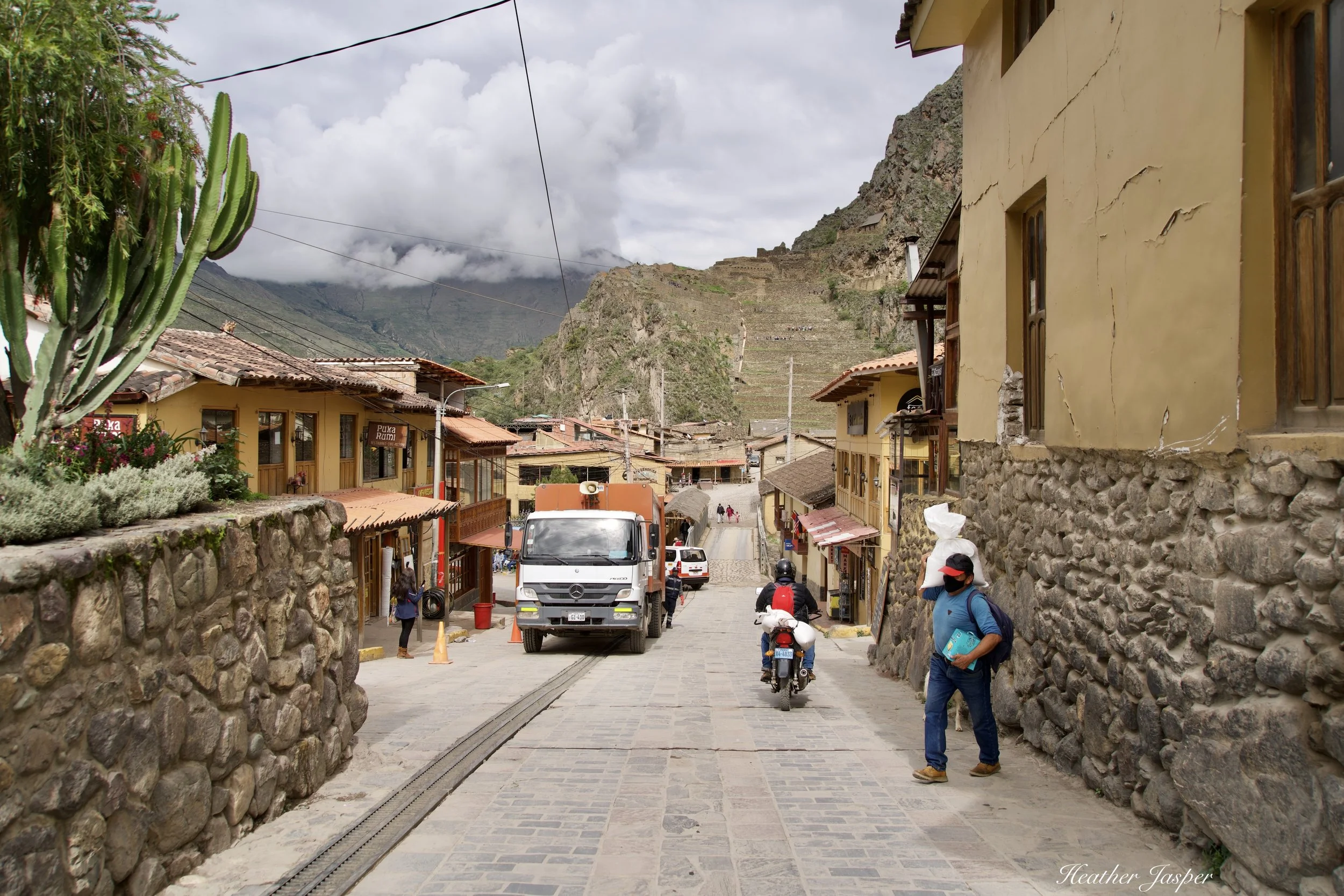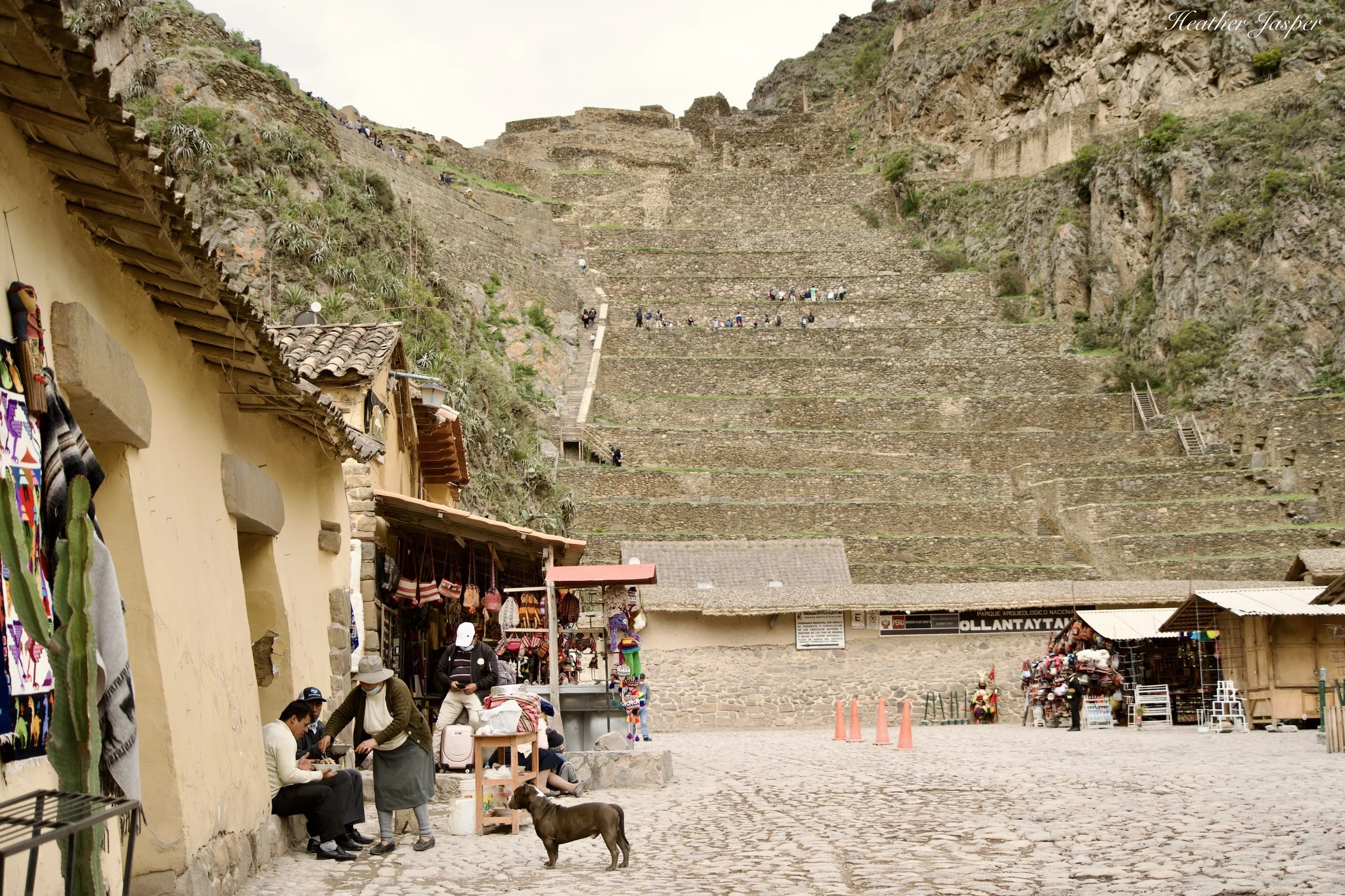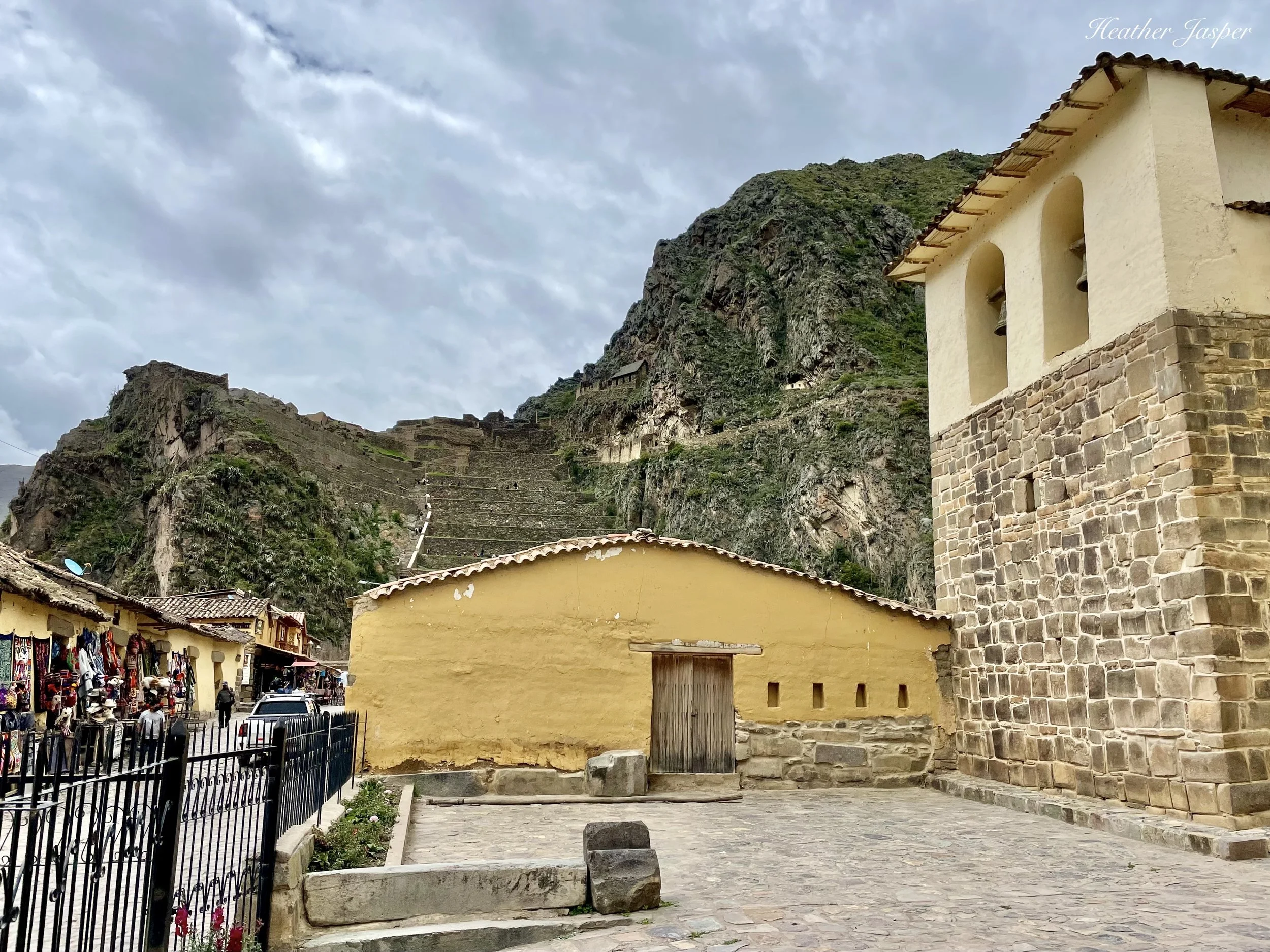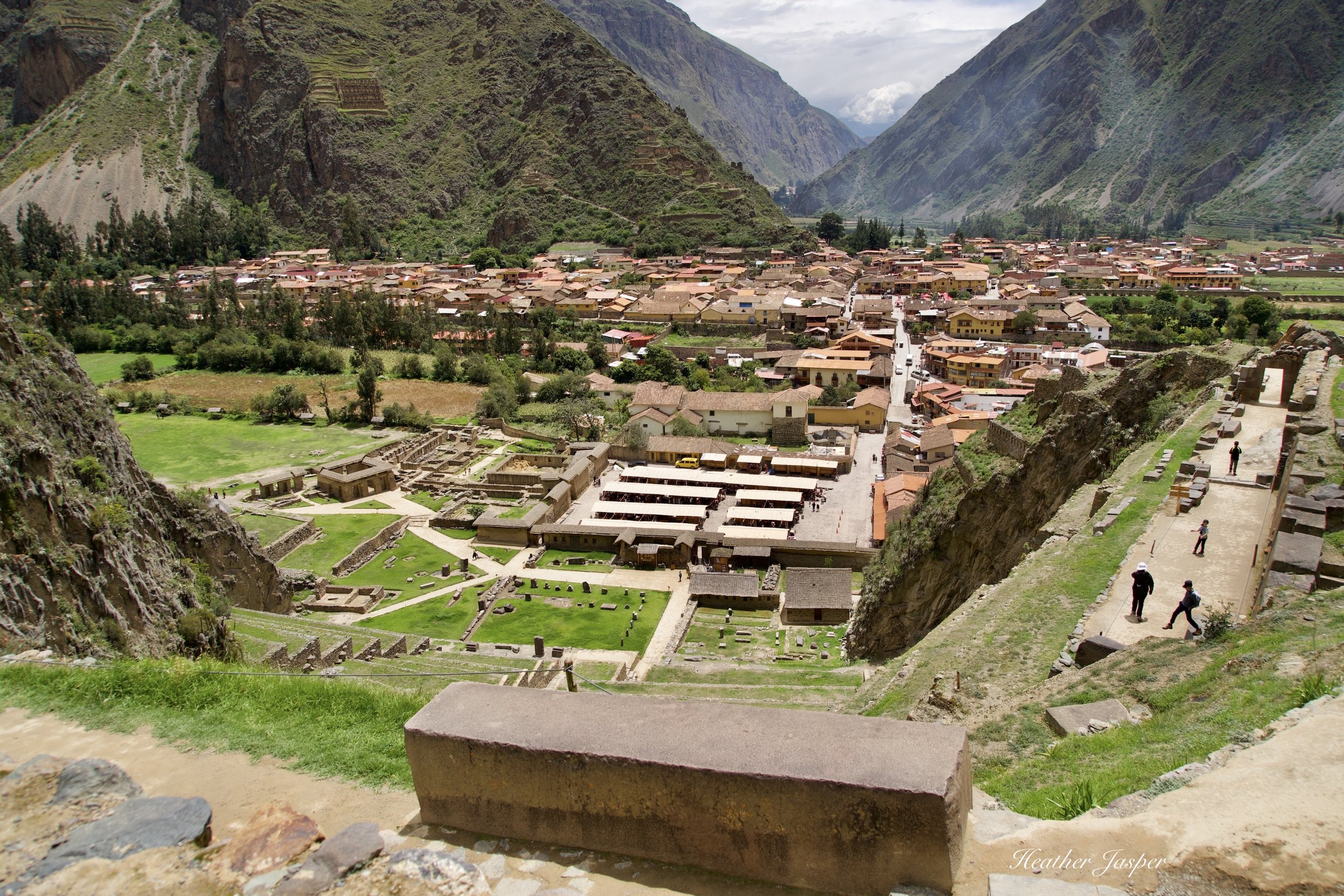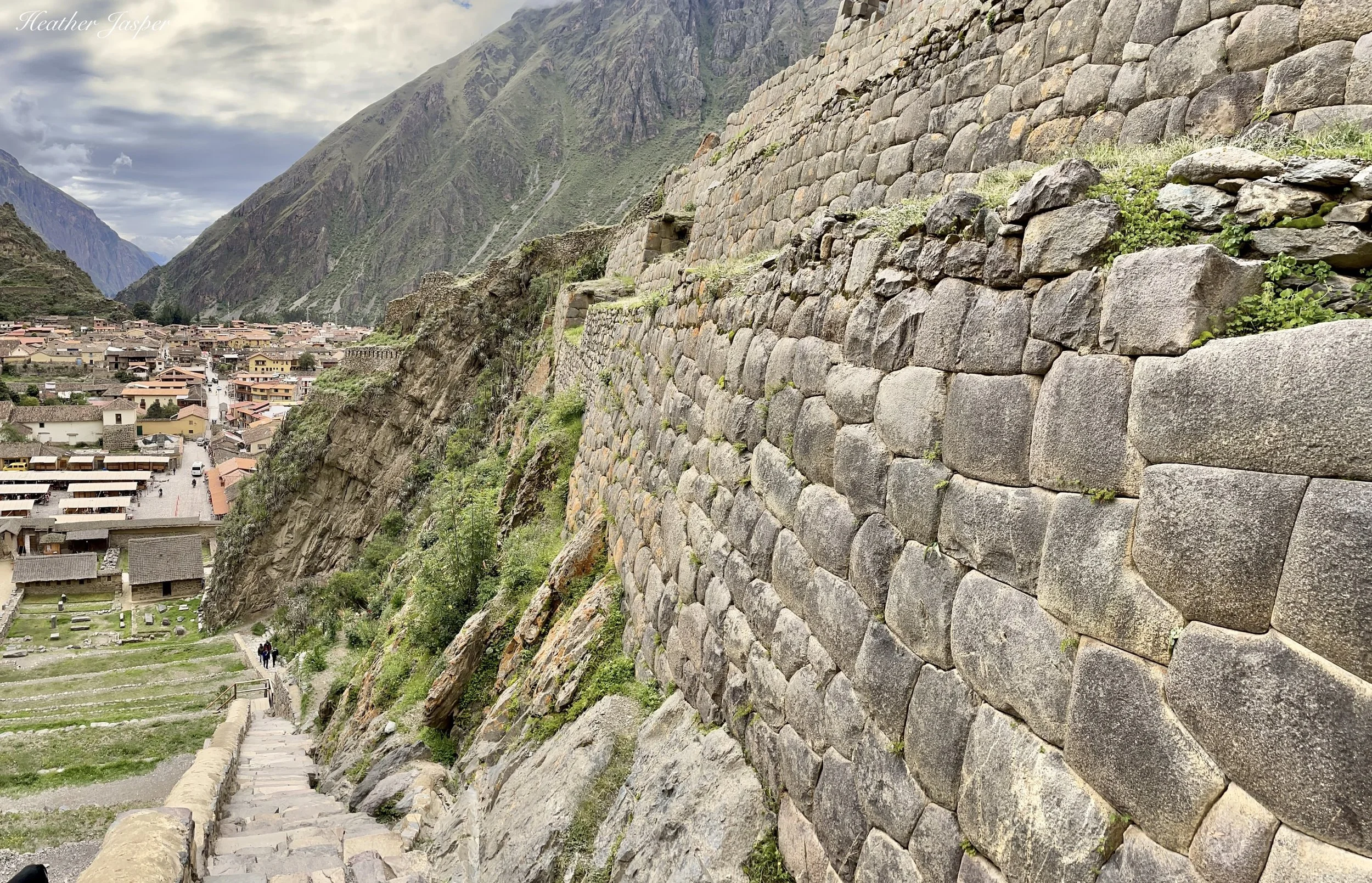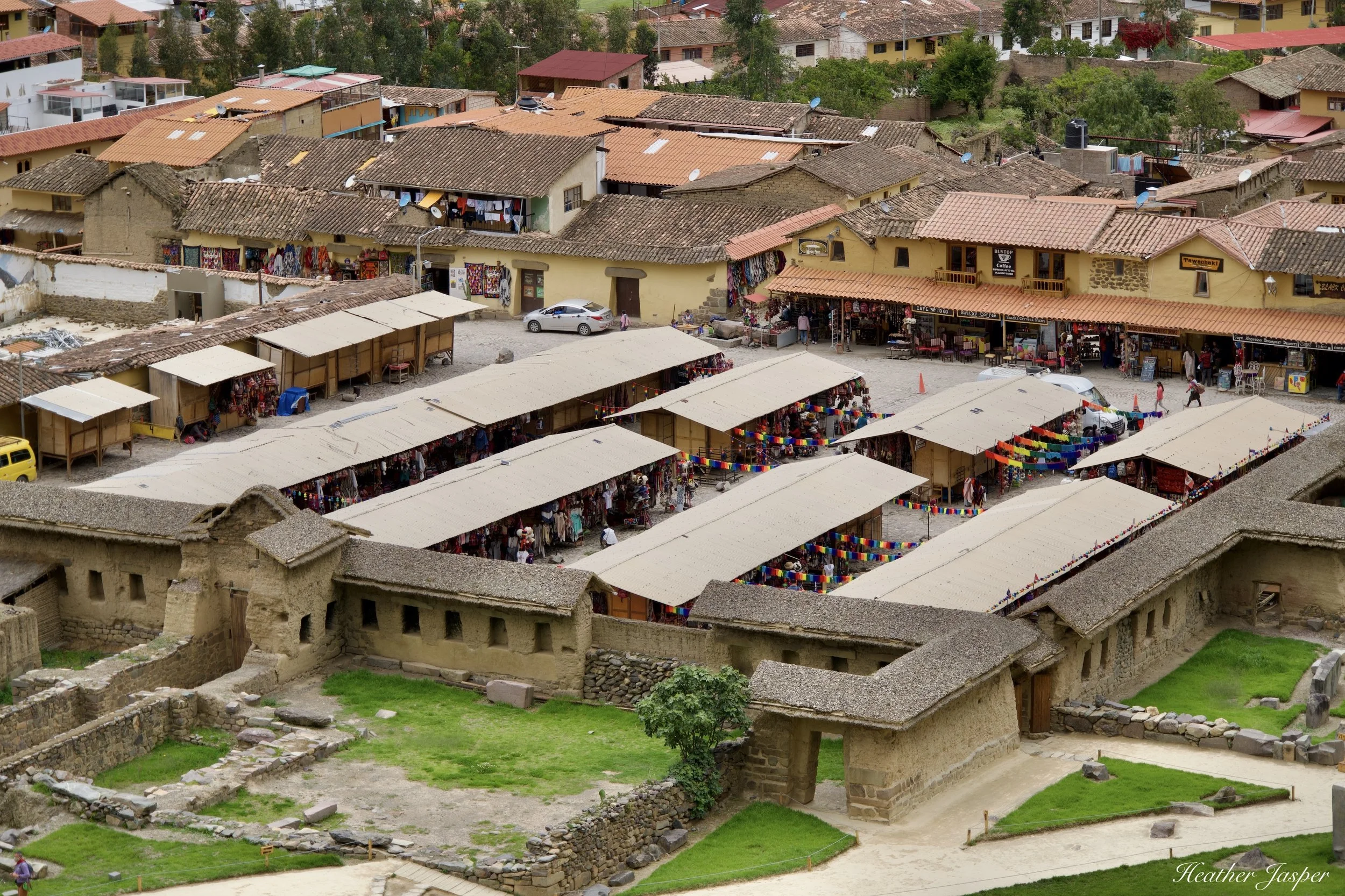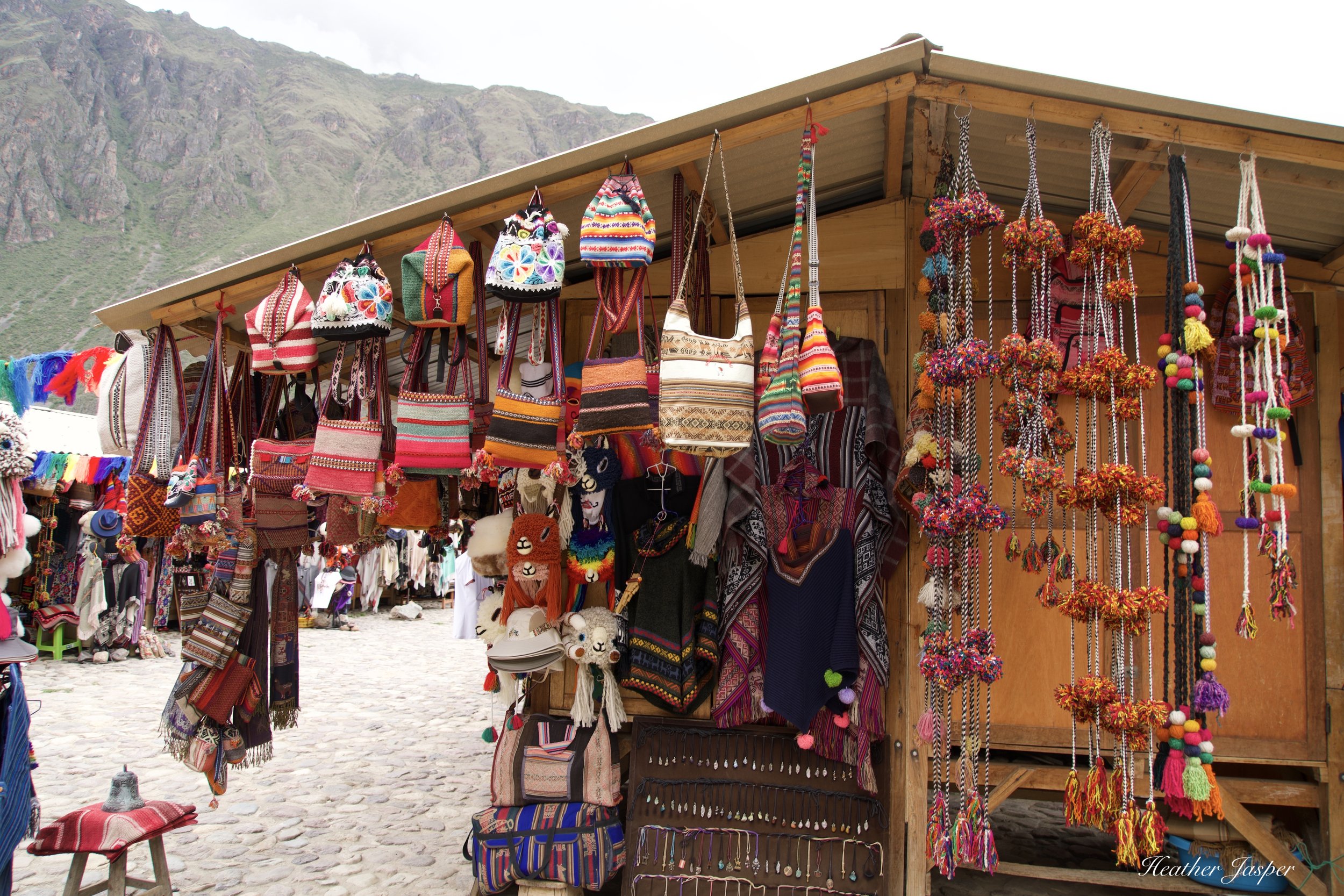Ollantaytambo Inca Ruins
Ollantaytambo is the gateway to Machu Picchu.
Ollantaytambo is where you take the train to Machu Picchu and one of the best Inca ruins in Peru.
I love Ollantaytambo and rated it as #3 in my list of the top 15 Inca sites that aren’t Machu Picchu. The ruins themselves are impressive but for me the story is even better than the site itself. The town is lovely and a great place to spend a day before you go to Machu Picchu.
The train station in Ollantaytambo is the most common place to catch the train to Machu Picchu. Even if you take the train from Cusco, it will stop in Ollantaytambo to pick up more passengers. It’s actually faster to drive from Cusco, so only plan to take the train from Cusco if you’re indulging in one of the luxury trains just for the experience of taking the train.
This is the view the Spanish troops would have had at dawn, looking up to Manco Inca and his soldiers high above.
Every time I go to Ollantaytambo, I look up at the top of the ruins and imagine Manco Inca on a stolen Spanish horse.
It’s one of the few moments of the Spanish invasion of South America that I wish I could have witnessed. The battle in Ollantaytambo, in January 1537 was the only major defeat of the Spanish. Manco Inca took advantage of the Sacred Valley’s topography, stolen Spanish horses, the surprise of a dawn attack and his own ingenuity to completely destroy the Spanish forces.
It’s quite possible that Manco Inca’s triumph at Ollantaytambo is the reason that the Spanish never saw Machu Picchu.
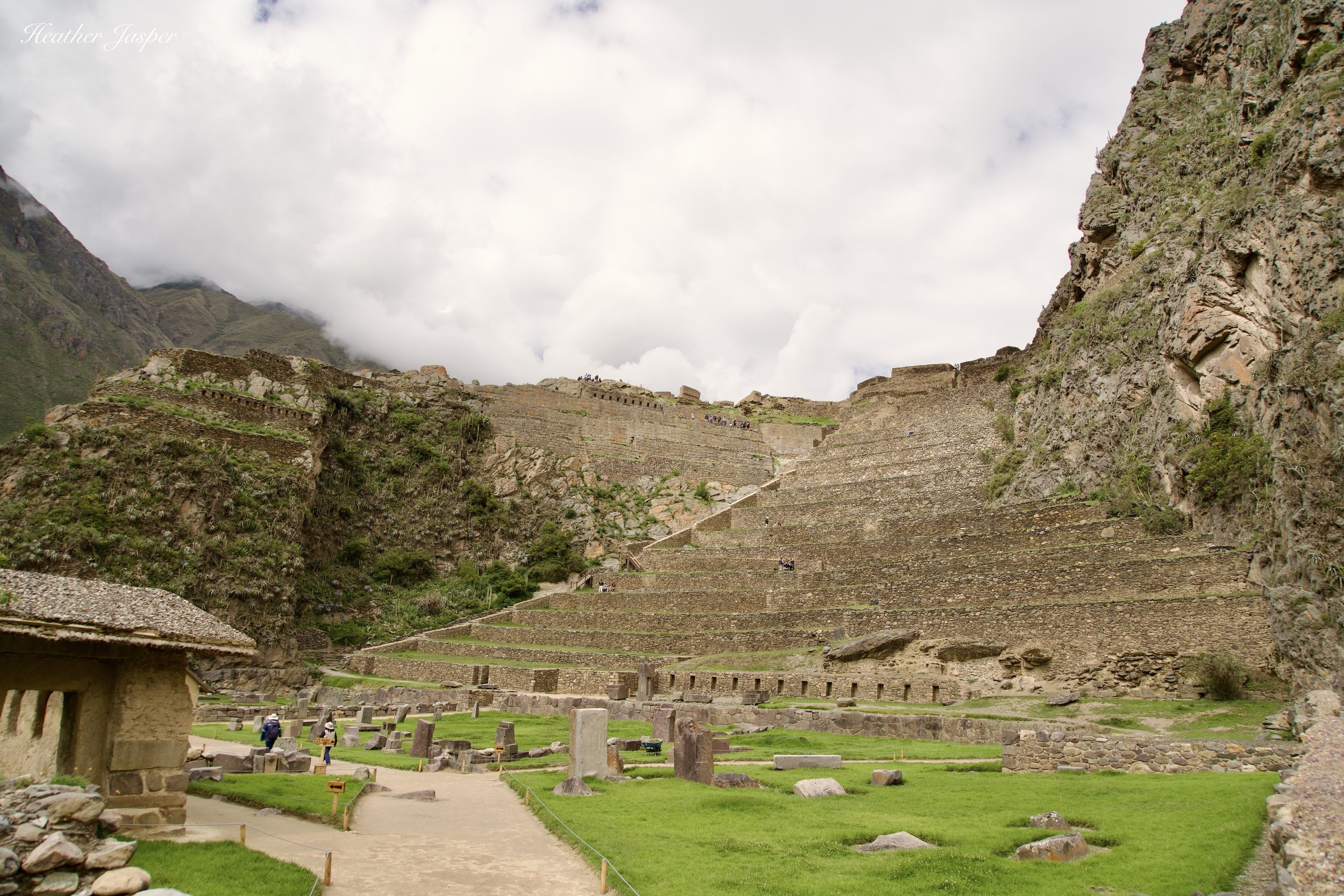
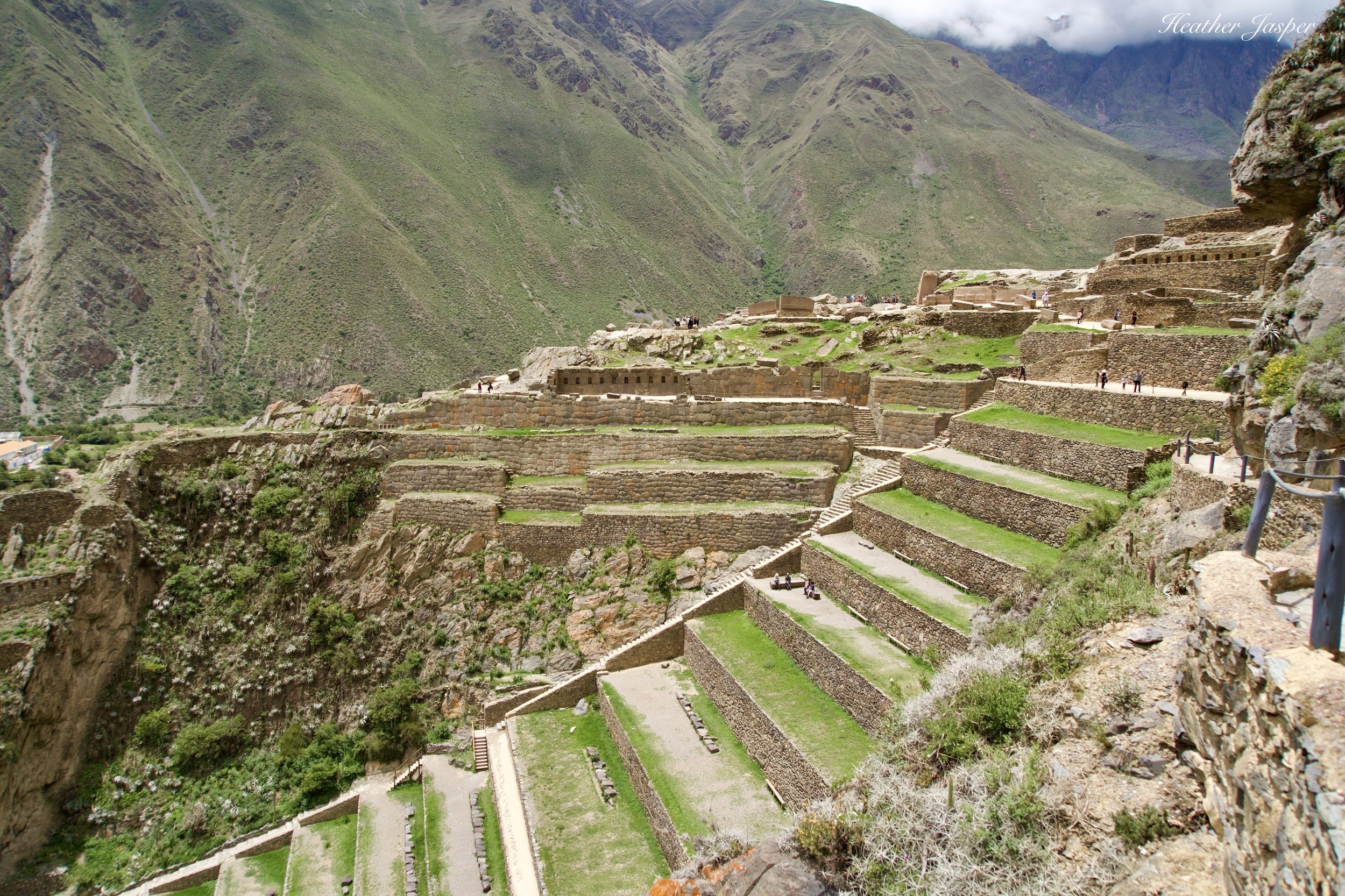
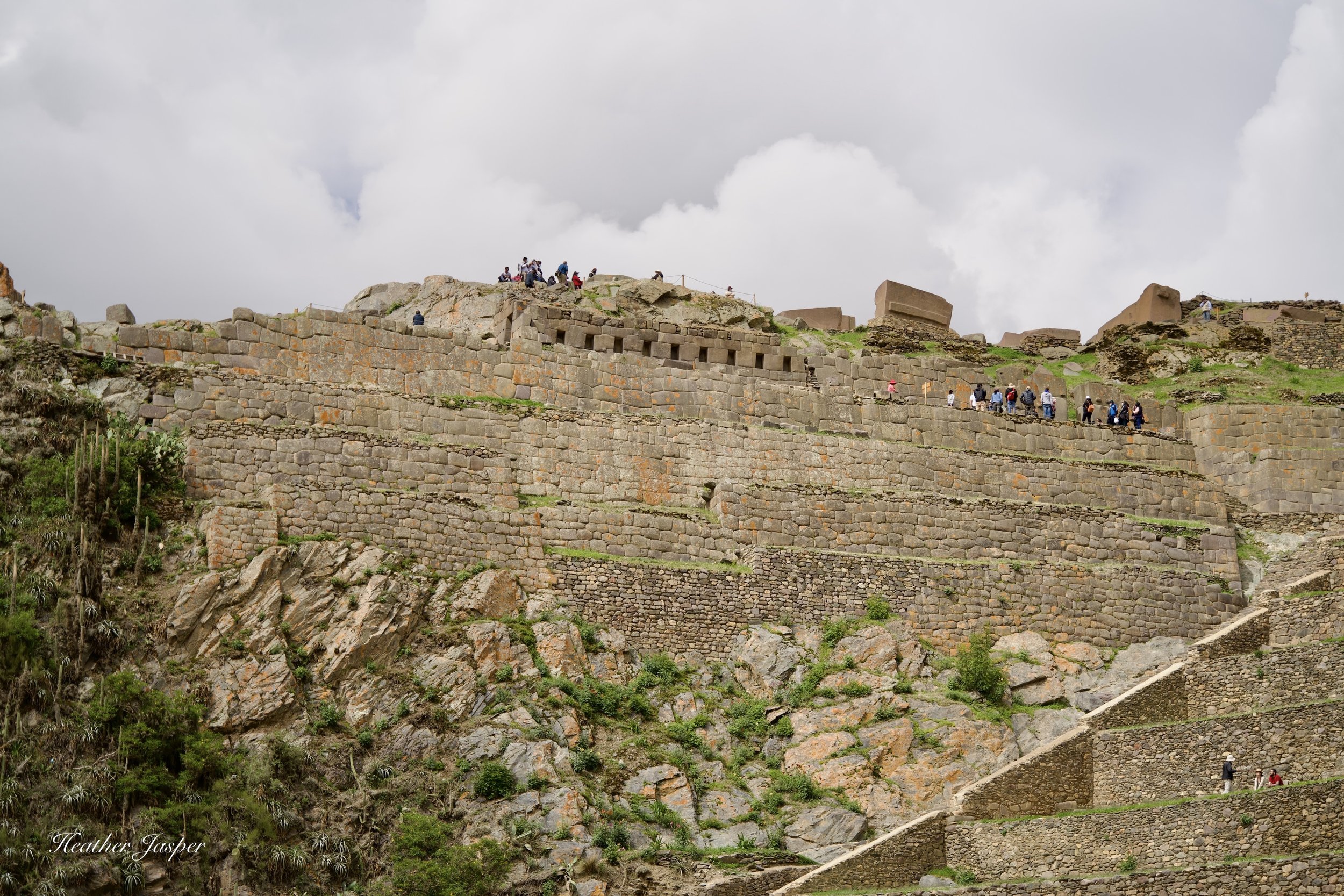
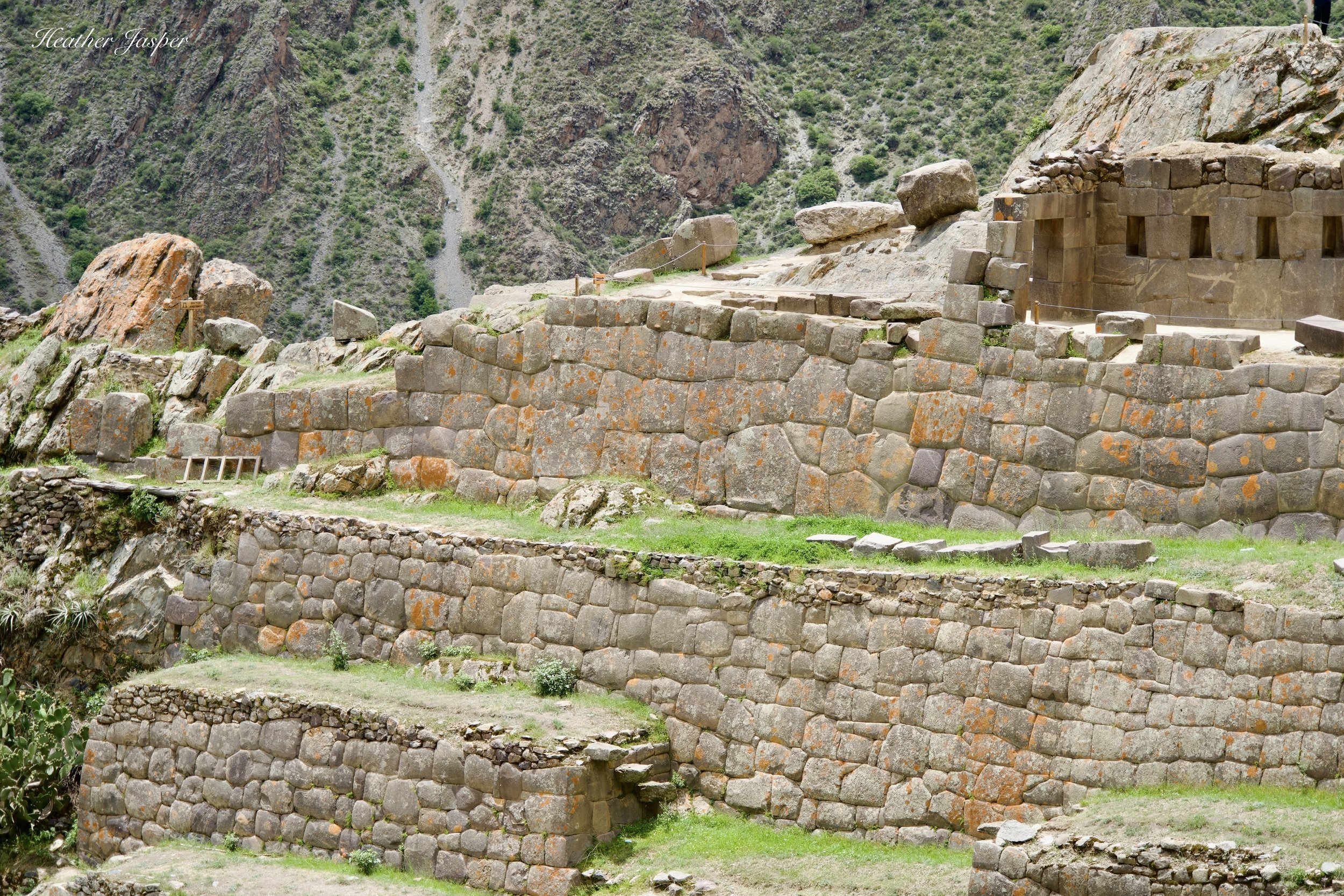
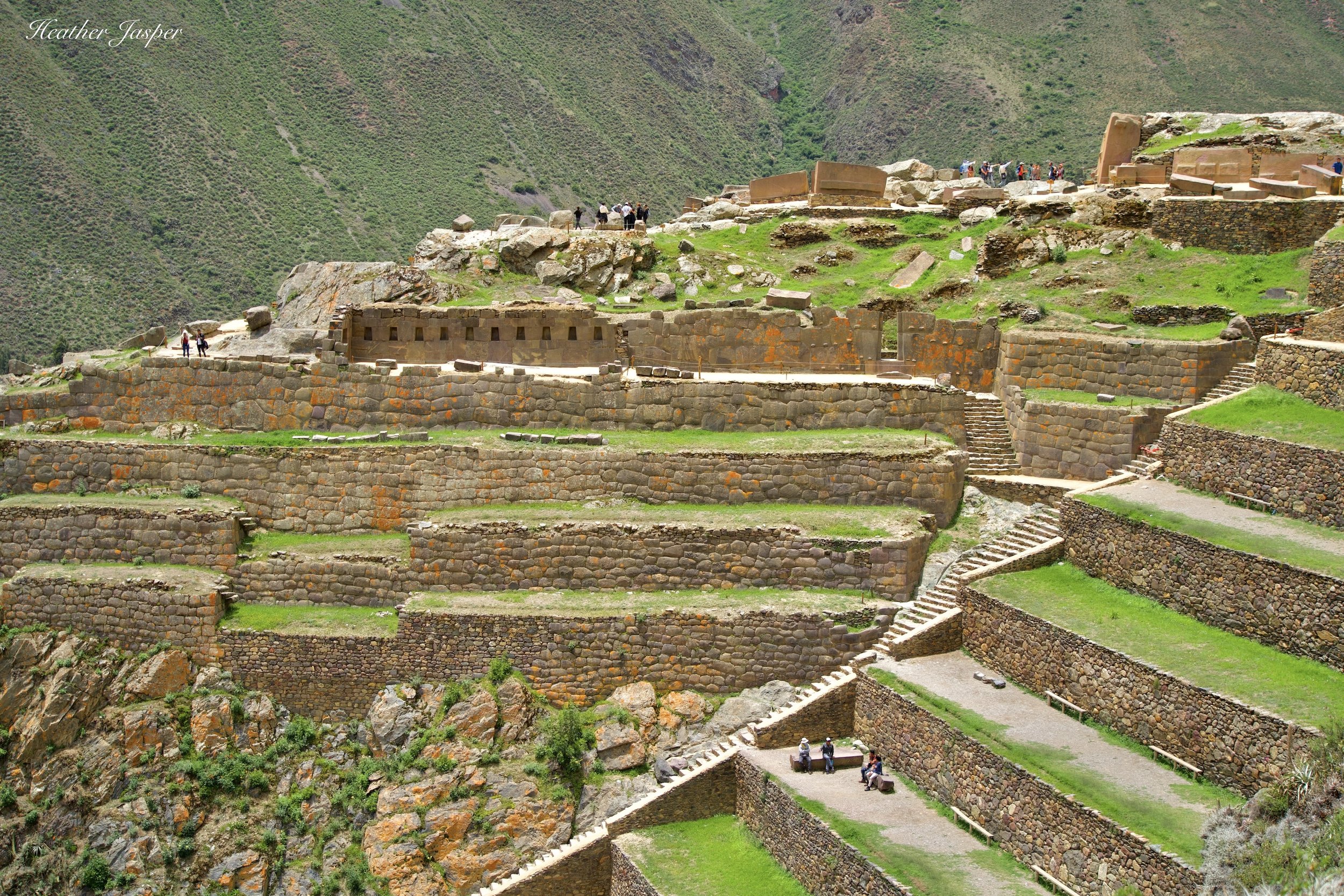
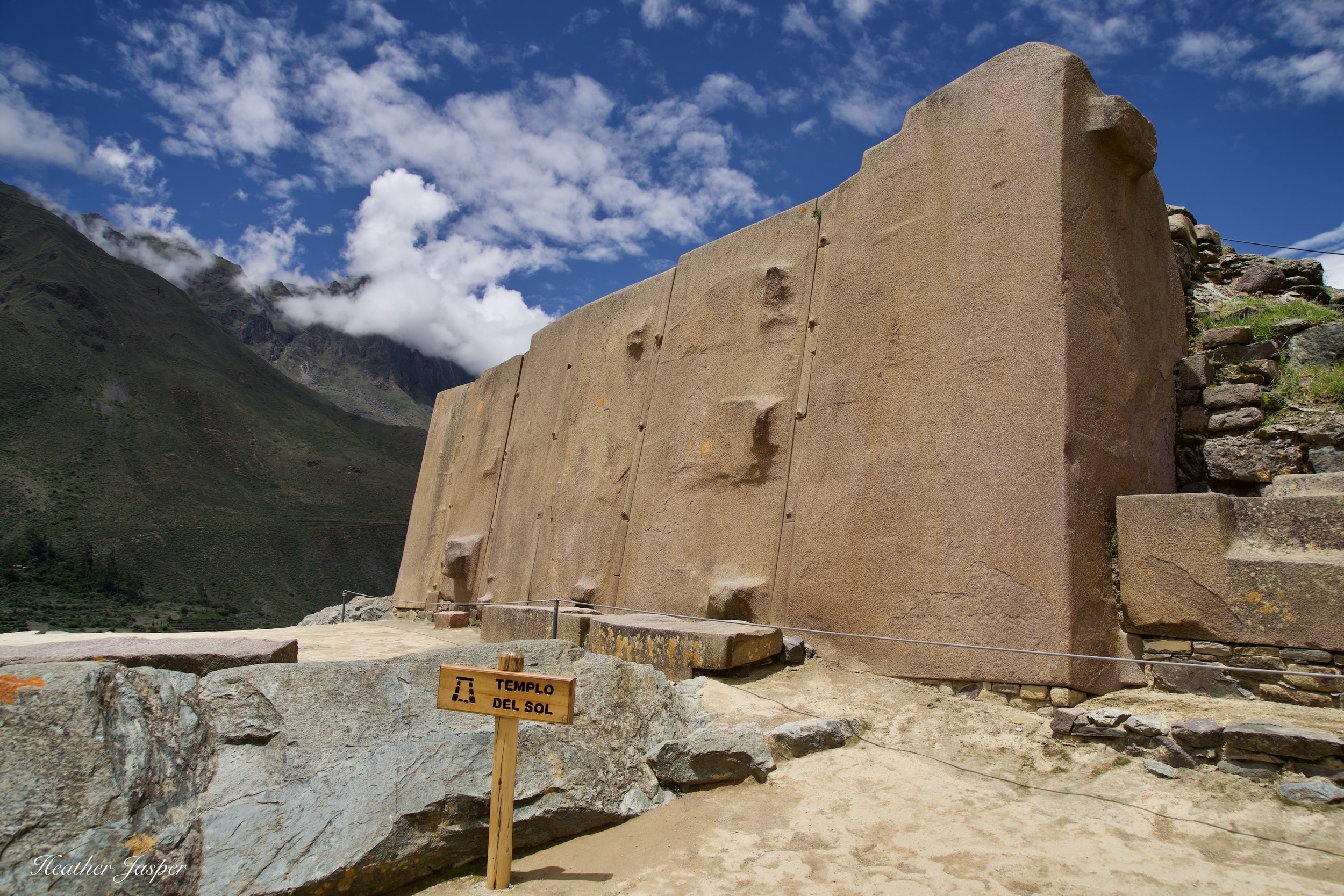

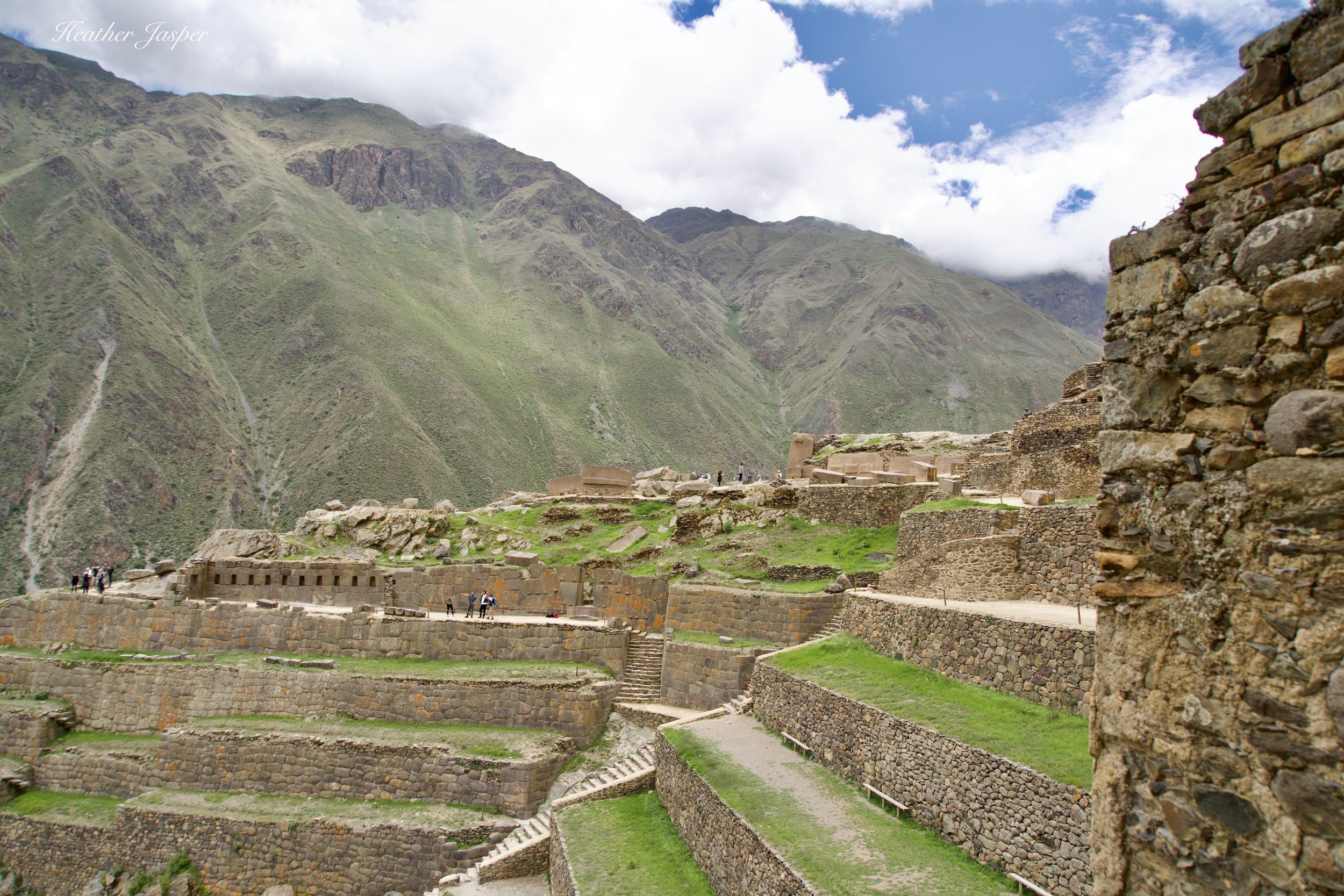
Manco Inca was born in 1515, making him only 18 years old when the Spanish first arrived in Cusco. History books also call him Manco Inca Yupanqi and Manco Cápac II. (Sidenote: the word Inca was used only for the leader, the Inca, and his family. Commoners were referred to by where they were from. I generally use the word Andeans, since most of the people I write about were from the Andes).
With about 20,000 soldiers, Manco Inca defeated Hernando Pizarro.
The younger Pizarro brother had only a hundred Spanish soldiers but about 30,000 Andeans who had turned against the Inca. (After years of reading about Inca history, it seems that one of their biggest weaknesses was how many different cultures they had recently conquered across South America who weren’t yet loyal to the Inca).
Looking down from the ruins, you can see two rivers come together in the flat valley where the town is. (The square thing in the middle of the hill is Pinkuylluna).
Manco Inca’s real genius, beyond learning to ride horses and leading his people in a massive rebellion, was his use of water. When the Spanish forces surrounded Ollantaytambo from below, he sent engineers to change the course of the river and wash the Spanish away. The resulting fields of mud were impossible for the Spanish horses to cross.
The Sacred Valley, and most of the Andes, are still full of carefully engineered irrigation systems. One of the first things you’ll notice at any Inca site is the water system, most of which still function today. I can’t begin to count how many Inca-designed fountains I’ve seen that are still flowing. My favorites are at Wiñay Wayna, near Machu Picchu.
The Sun Temple is the most popular place for group photos in Ollantaytambo.
The history of this battle and the site’s impressive architecture has led countless history books and guidebooks to call Ollantaytambo a fortress. According to every Peruvian archeologist and educated guide I’ve consulted, Ollantaytambo was most certainly not designed as a fortress.
I’ve seen this error written about so many Inca ruins. Obviously, history was written by the Spanish, who saw everything though the lens of war and who came from a continent where that was common. However, South America was such a different context that much was lost in translation. The Inca had no reason to construct military forts in the Sacred Valley. They didn’t foresee the arrival of violent Europeans and nobody else was going to attack them.
The unfinished Moon Temple
The Moon Temple had barely been started when the construction was interrupted by the Spanish and unless you know it’s there, you might not even notice.
Construction zone
Ollantaytambo is covered with massive stones, some of which might have been dismantled by the Spanish but some of which were simply not assembled yet.
The Sacred Valley was exactly that: a valley full of sacred sites, not military fortresses.
When the Spanish arrived, Ollantaytambo was a construction zone with a partially finished Sun Temple at the top. The Moon Temple, just below the Sun Temple, was just being started when the Spanish invasion stopped everything.
The terraces that lead up to the temples were clearly not designed for agriculture. They’re not wide enough and don’t have the fertile topsoil that was brought to all the agricultural terraces throughout the Sacred Valley. Of course, for centuries they have been misconstrued as being defensive structures, but archeologists today have another theory. They were simply hillside stabilization, preventing earthquakes from destroying the access to the temples at the top.
The quarry for these massive stones is far and the amount of downhill and uphill they had to be carried is impressive.
Another common error is when people look at the massive stones that make up the Sun Temple and think that people couldn’t possibly have carried them up to the top. Even worse is when people ask me “Was it aliens?” To be honest, that just sounds like either idiocy or racism. Really? Aliens seem more likely than Andeans being good engineers?
It's true that Ollantaytambo is an impressive construction that would have been very difficult to make. It’s also true that from the top of the ruins, when you look across the valley to where the stones were quarried, how far the stones were brought looks almost impossible. Yet, it clearly wasn’t impossible for the Inca’s engineers.
Read my blog about the hike to Inti Punku, which takes you by the quarry.
When you look at the massive stones that make up the wall of the Sun Temple, you can see faint shapes that are hard to make out. One of the stones had chakanas on it and another had pumas. The chakana is a symbol that’s sometimes referred to as the Andean cross. Except the chakana represents different levels of existence, not crucifixion. The top of the chakana represents the upperworld, symbolized by the condor. The middle part represents the world we live in, symbolized by the puma. The lower part is the underworld, symbolized by the snake because it can shed its skin and be reborn.
So carefully engineered
One of my favorite things about the Sun Temple is the narrow stones set between the big ones. They were designed to be shock absorbers. In case of major earthquakes, the thin stones will break and protect the larger stones.
Built like Legos
Since the Sun Temple was unfinished, we can see the engineering in this base that never got its top. The small stones are shock absorbers for earthquakes and the carvings on the wide stone serve the same purpose as Legos: the giant stones on top fit perfectly.
Pinkuylluna Storage
On the facing hillsides, on the other side of town, are the Pinkuylluna ruins. Read my blog about Pinkuylluna!
Around the side from the main part of the ruins is another area (above) with terraces, fountains and buildings that likely had been finished, but that the Spanish destroyed. Many Spanish colonial buildings were built with stones taken from Inca constructions. Of course, it would have been much easier for them to take the stones from buildings down on the flat than the stones up at the top of the terraces.
Today the town of Ollantaytambo is one of the most intact Inca towns.
The original irrigation and drainage systems are still used today, both in town and in the surrounding agricultural fields. Homes in the center of town still have Inca walls and the layout of the town is original. Of course, this causes some traffic problems because it was designed long before cars were invented. Plan to get to Ollantaytambo more than half an hour before any train departure to Machu Picchu.
The market that’s right outside the gates of the archeological site has mostly the same things that you’ll see in markets in Cusco. You might be able to get slightly lower prices, but even if the price is the same, this market is much more relaxed. It’s a more pleasant experience than the crowded markets in Cusco.
How to get there?
If you’re taking a tour of the Sacred Valley, Ollantaytambo will be your last stop before you go to Machu Picchu. If you’re going directly from Cusco, it takes about an hour and a half to drive to Ollantaytambo.
If you’re traveling without a tour agency, go to Puente Grau in Cusco. Vans and shared taxis leave constantly throughout the day. Depending on the size of the vehicle, a seat can cost between s/10 and s/20. Expect to pay more for cars than vans. It is possible to pay for all the seats in a car and have a private taxi to Ollantaytambo from Puente Grau.
During the rainy season, sun rays and rainbows frequently lead to the Temple of the Sun, at the top of the ruins.
When to go?
The archeological site is open every day from 7am-5pm.
Ollantaytambo is great any time of year. There are fewer crowds in the rainy season and that’s when the hills are green. While the rainy season can complicate transportation in case of mudslides or flooded rivers, the ruins themselves are just as beautiful in the rain.
May 31st is the most important festival in Ollantaytambo. The celebration of the Señor de Choquekillka is an important event in both the Andean and Catholic calendars. You’ll see an amazing festival with elaborate costumes, dances, and music. The celebration is several days long, but the main day is the 31st.
Entrance fees for the archeological site
You have to buy the Boleto Turistico del Cusco (BTC) for Ollantaytambo.
The BTC includes 16 Inca sites and museums. There is no separate ticket for only Ollantaytambo. The BTC is available for purchase at all 16 sites and only cash is accepted. The full BTC, which includes sites in both Cusco and the Sacred Valley, costs s/130. The partial BTC for either Cusco or the Sacred Valley, costs s/70.
Where to stay?
My favorite place is Earth Tones, above. They’re tiny homes in the most beautiful spot just a ten minute walk from the center of town. Check out the Earth Tones website and Instagram!
There are plenty of decent hotels and hostels in Ollantaytambo. The best one for a big group that I’ve stayed at is Tunupa, which is conveniently located close to the train station. The only really nice hotel is El Albergue, which basically is the train station (below).
Where to eat?
The two nicest restaurants are Al Albergue (above) and Alqa. Alqa is an art gallery, fancy restaurant and my favorite place to get good coffee because they have a giant garden out back with tables tucked back in the greenery.
My other two places for coffee are Sunshine Café, across from the church and Chuncho, on the plaza. For good (but basic) food try Quinua Restaurante & Pizzaria on the plaza or Uchucuta next to the Sunshine Café.


